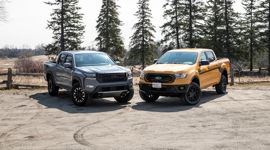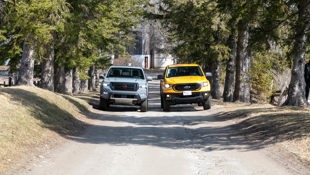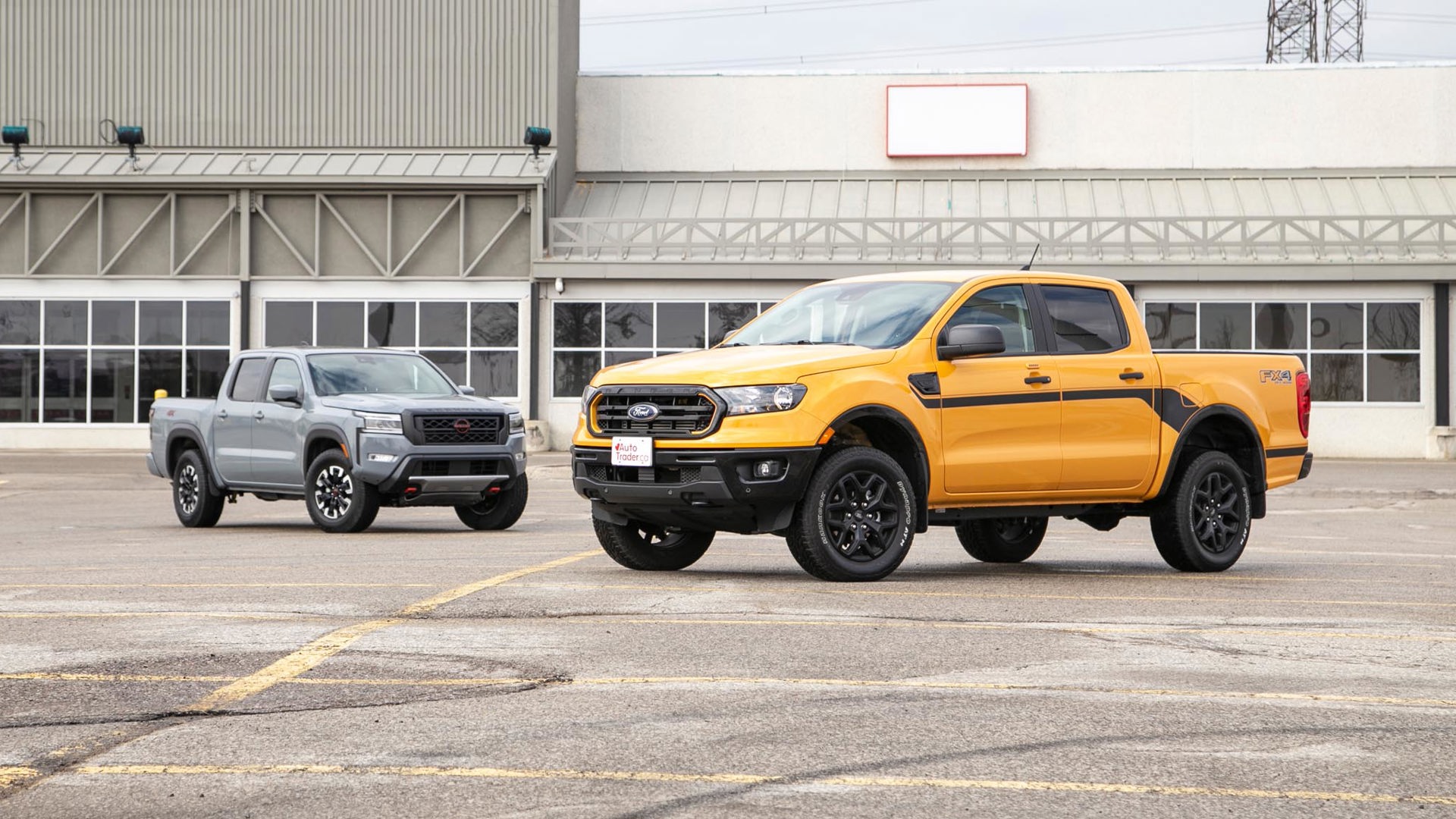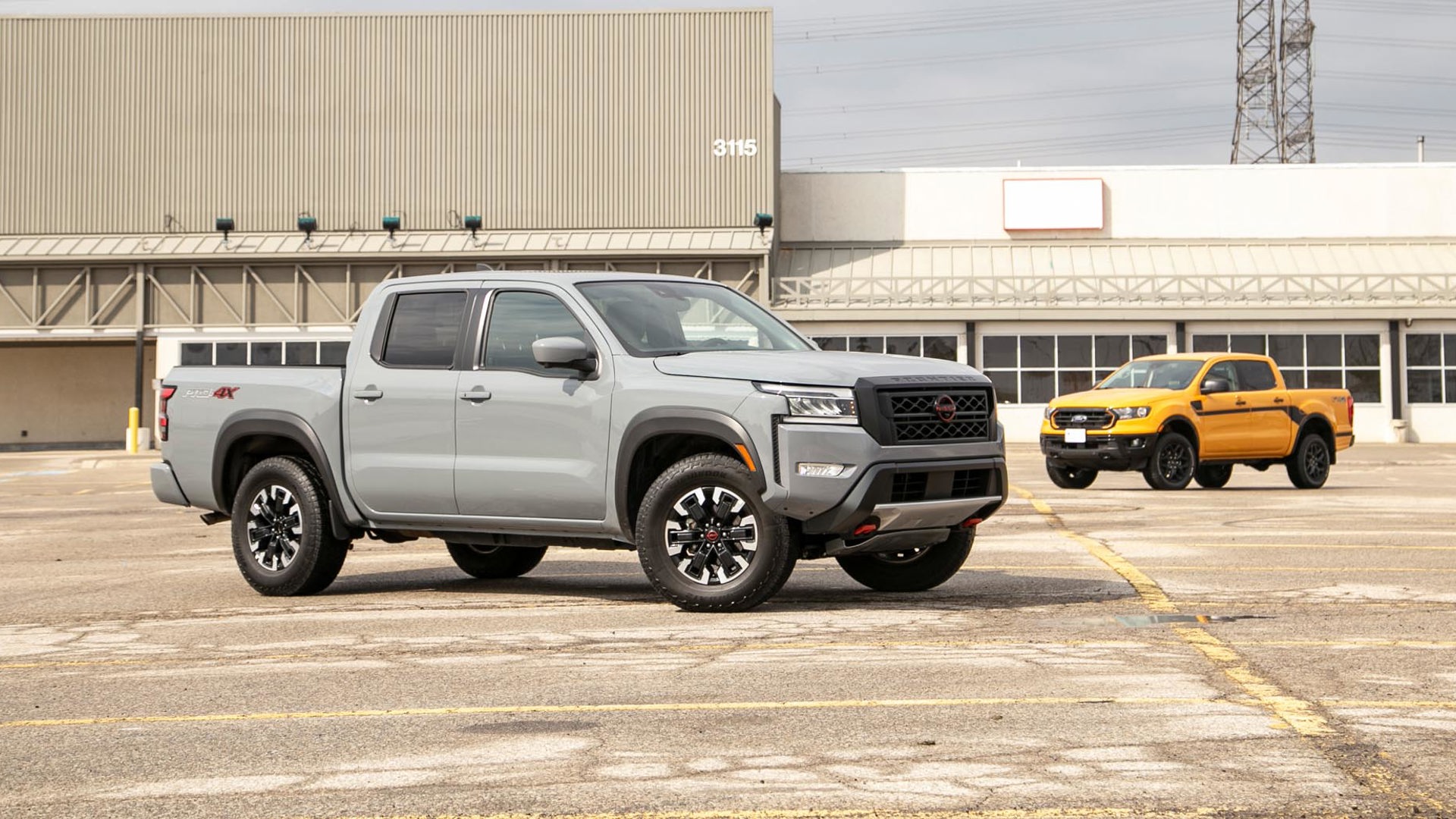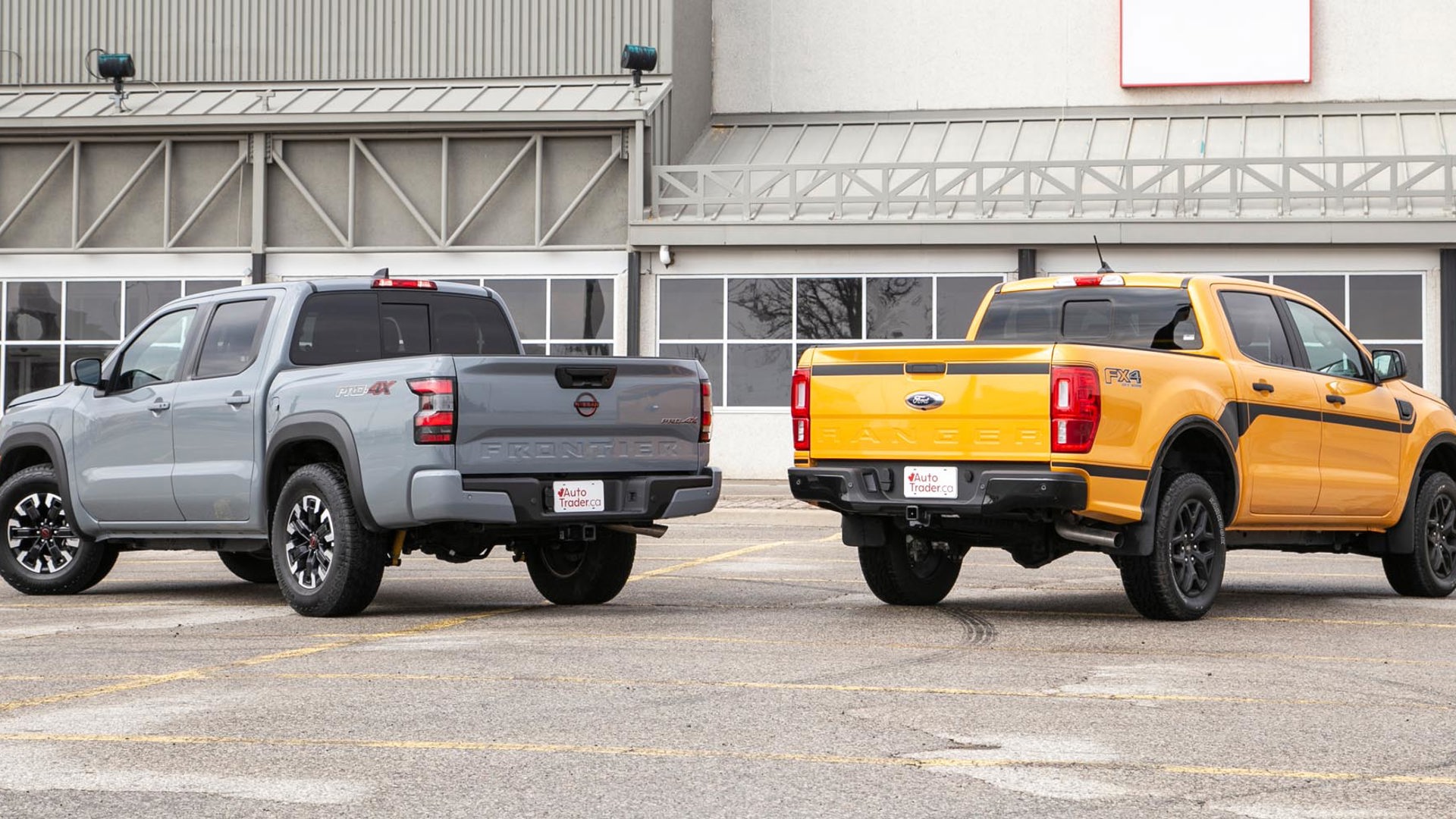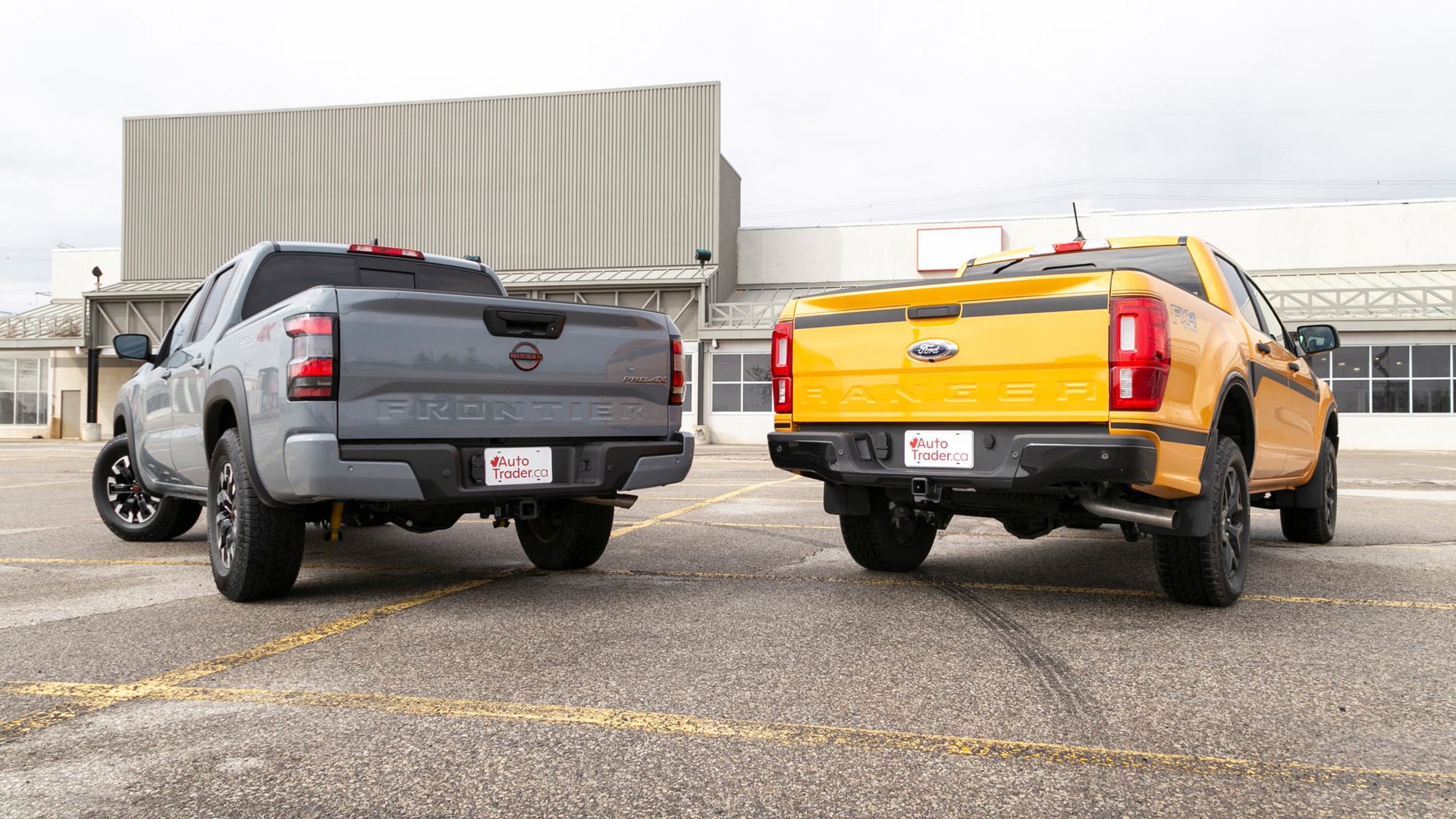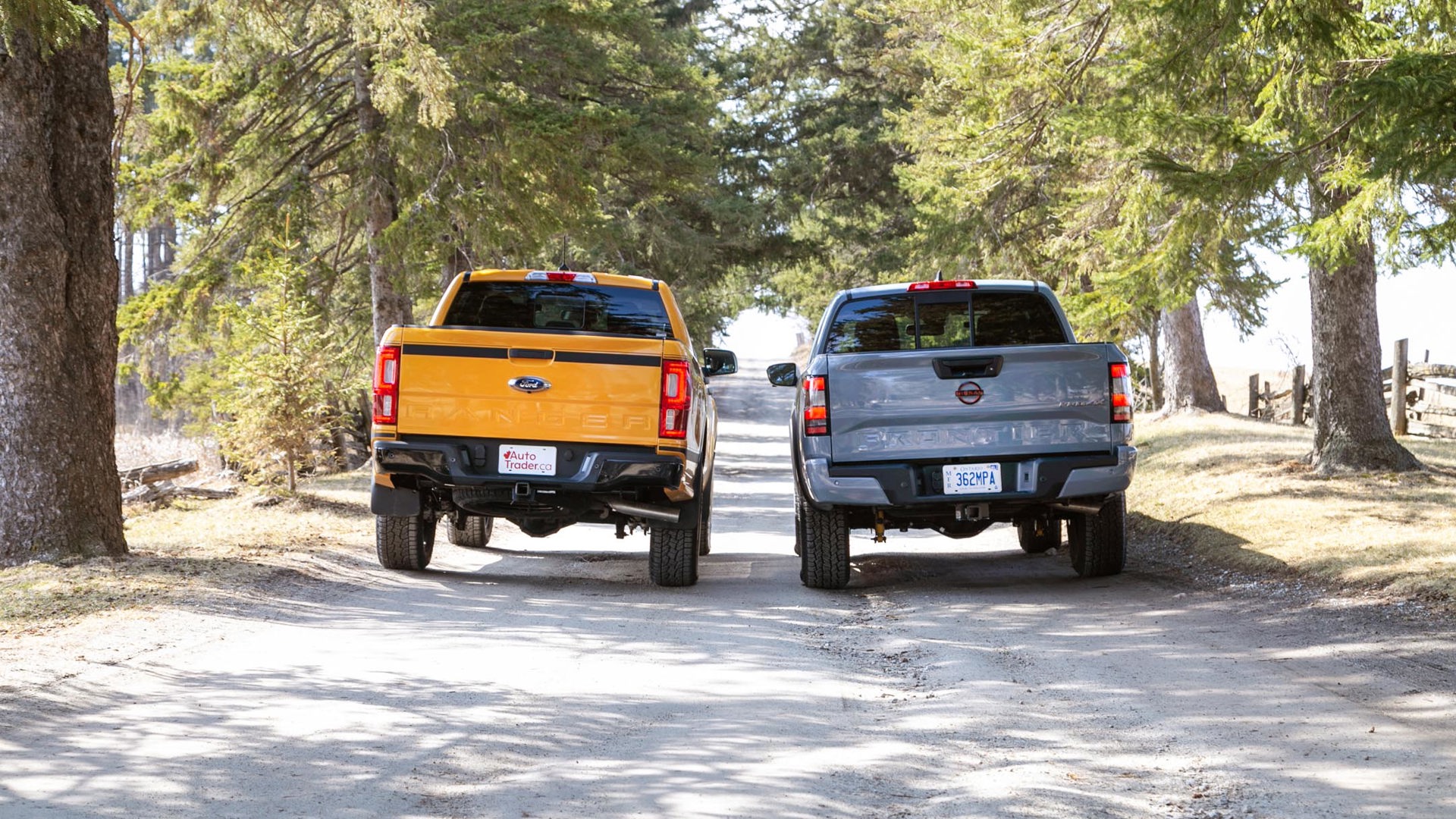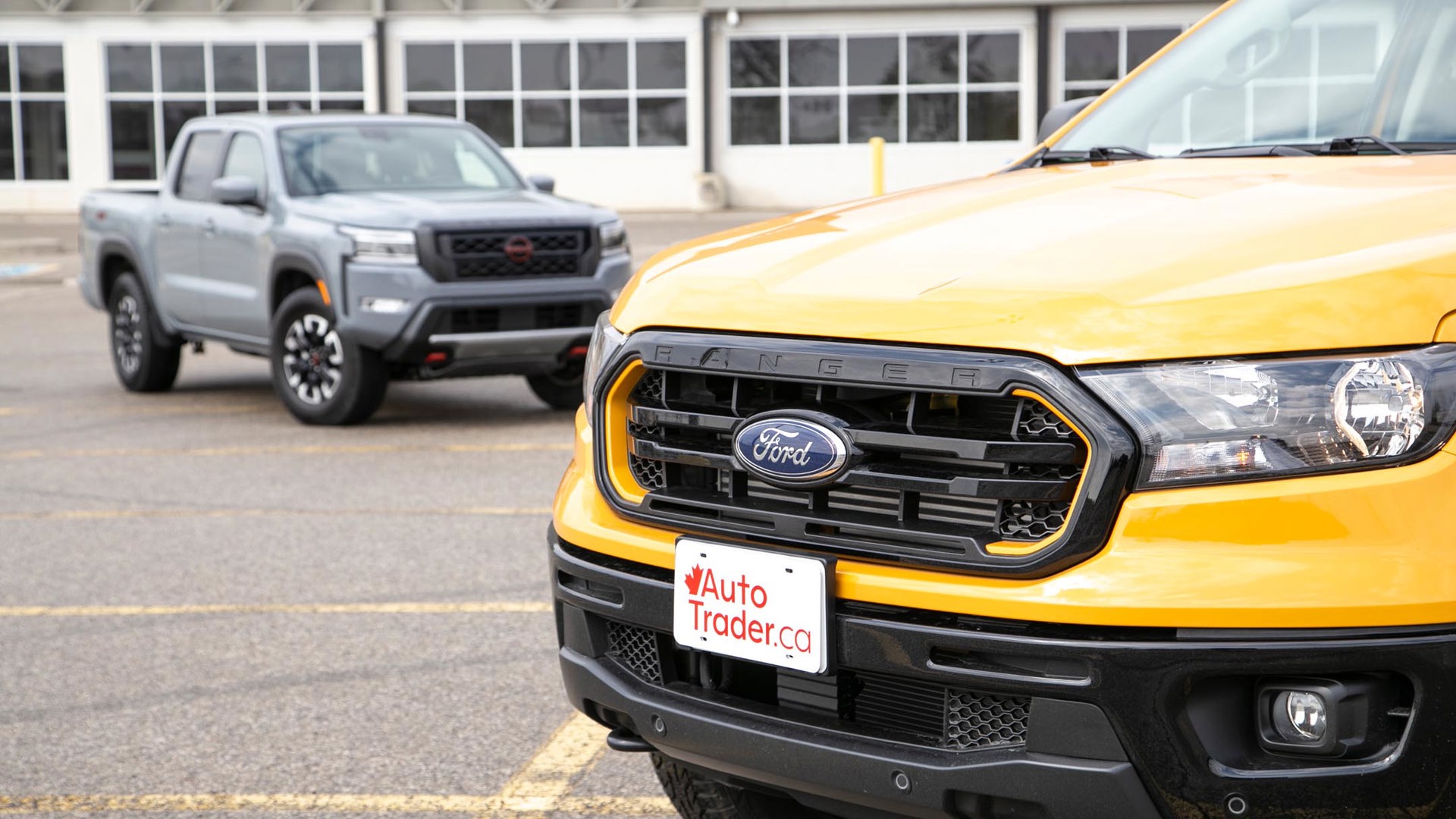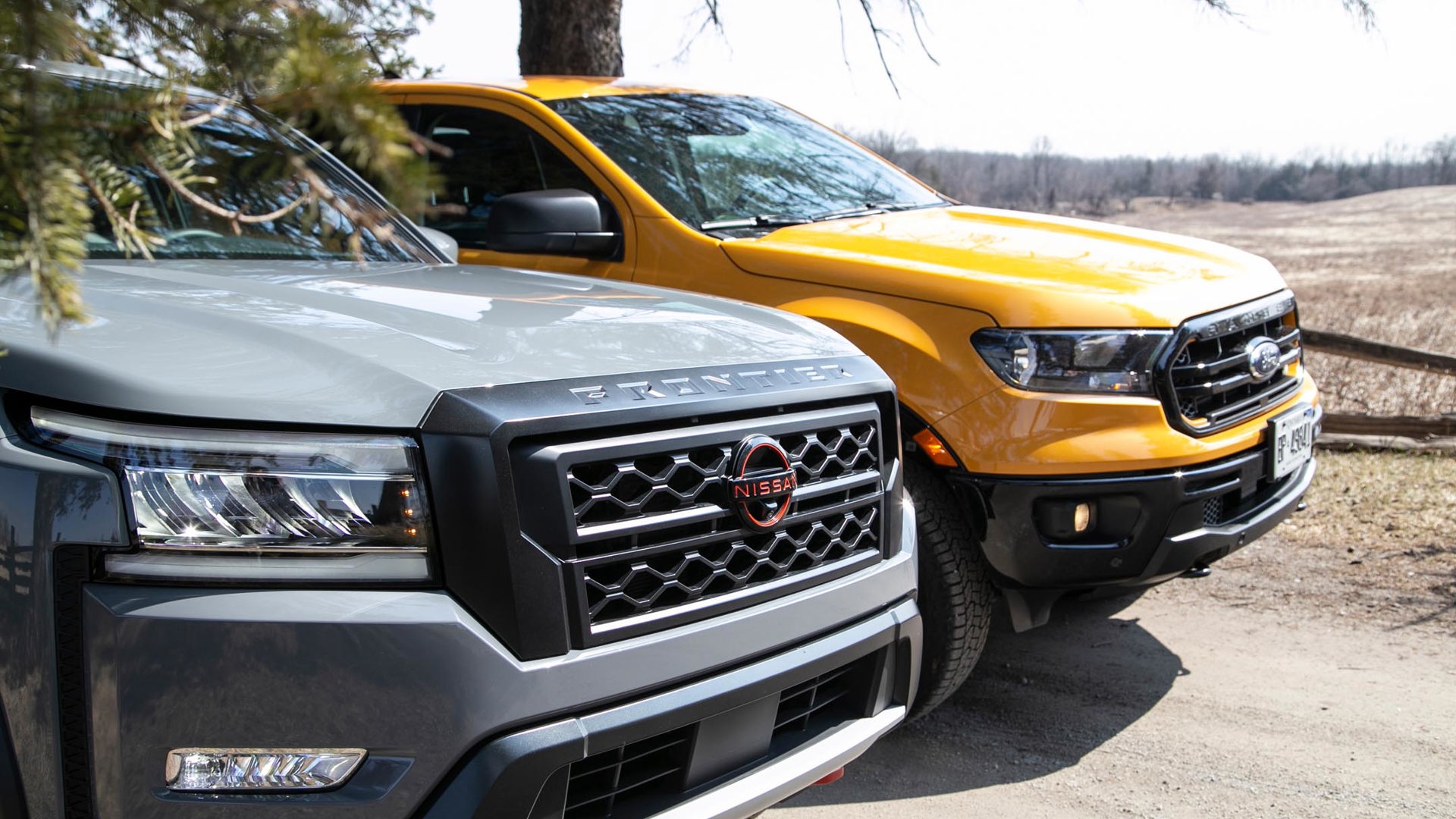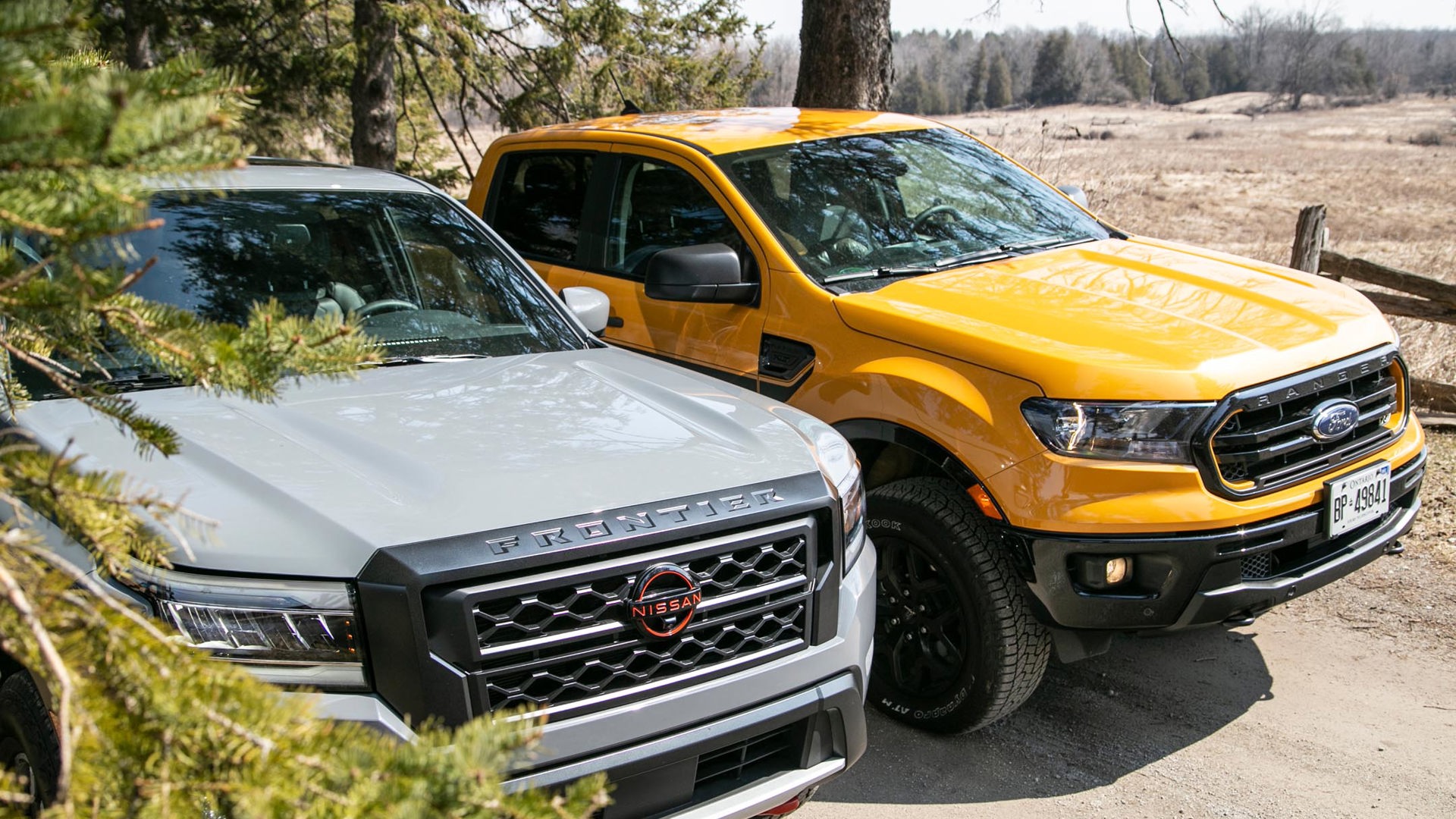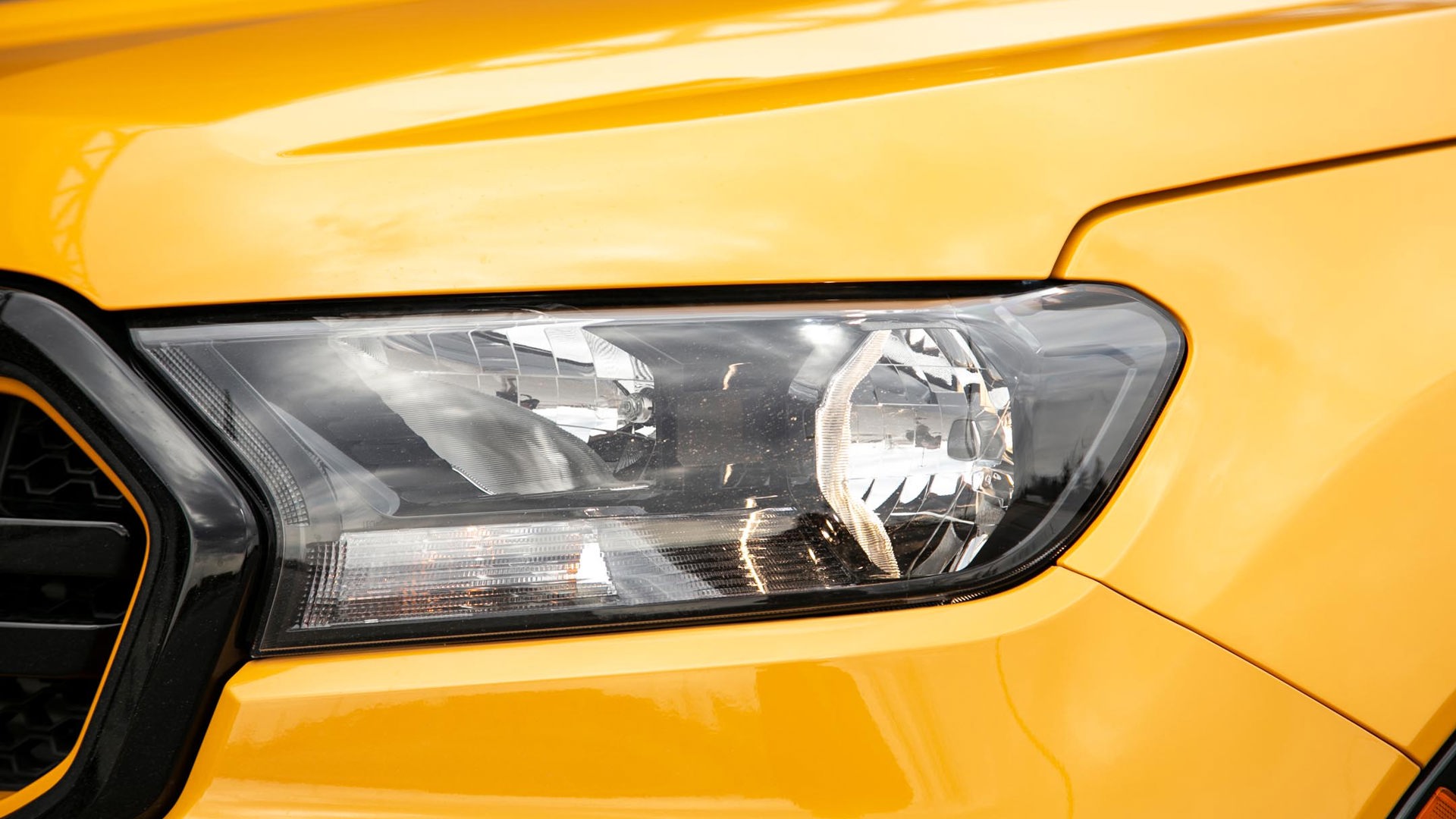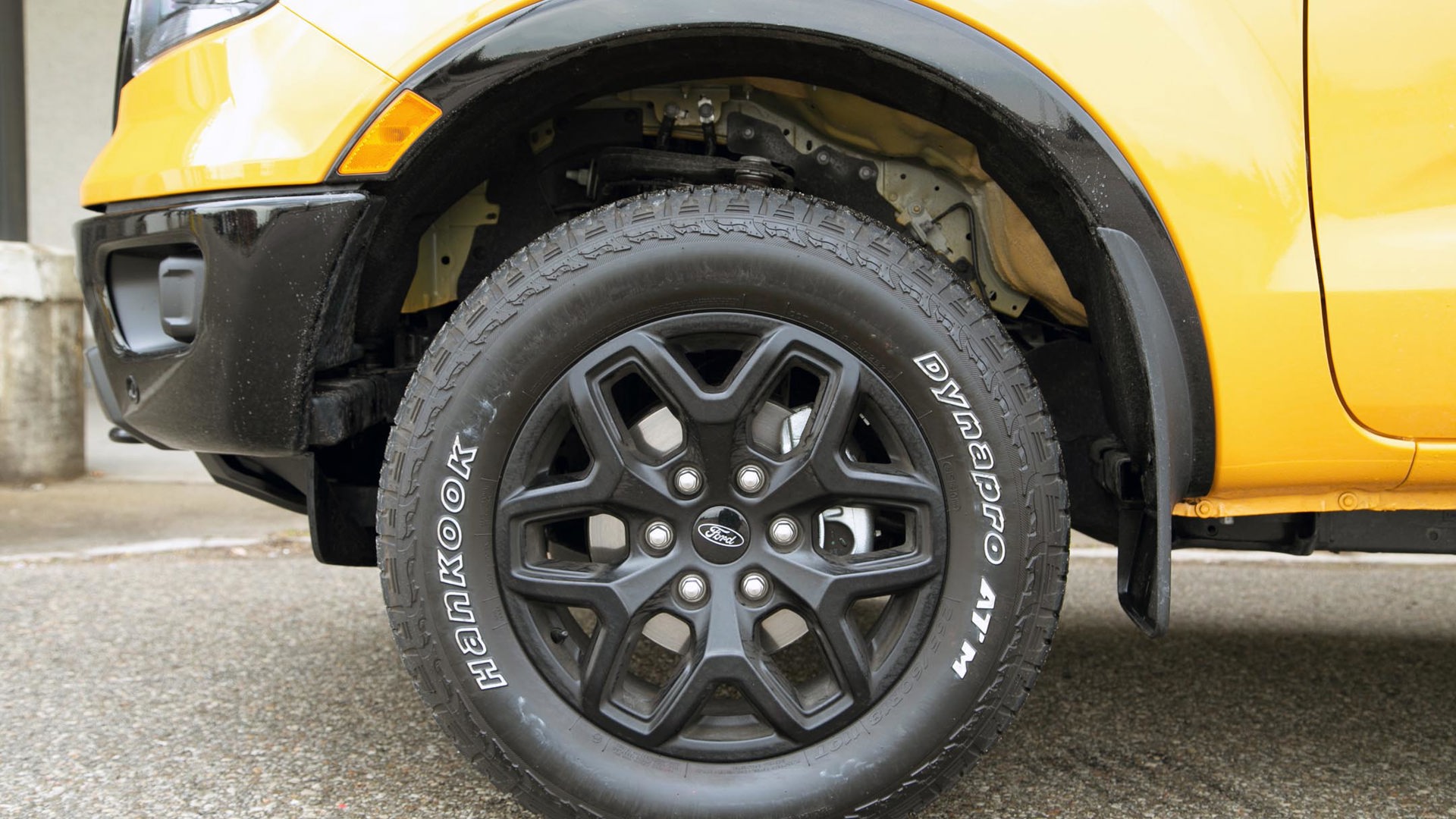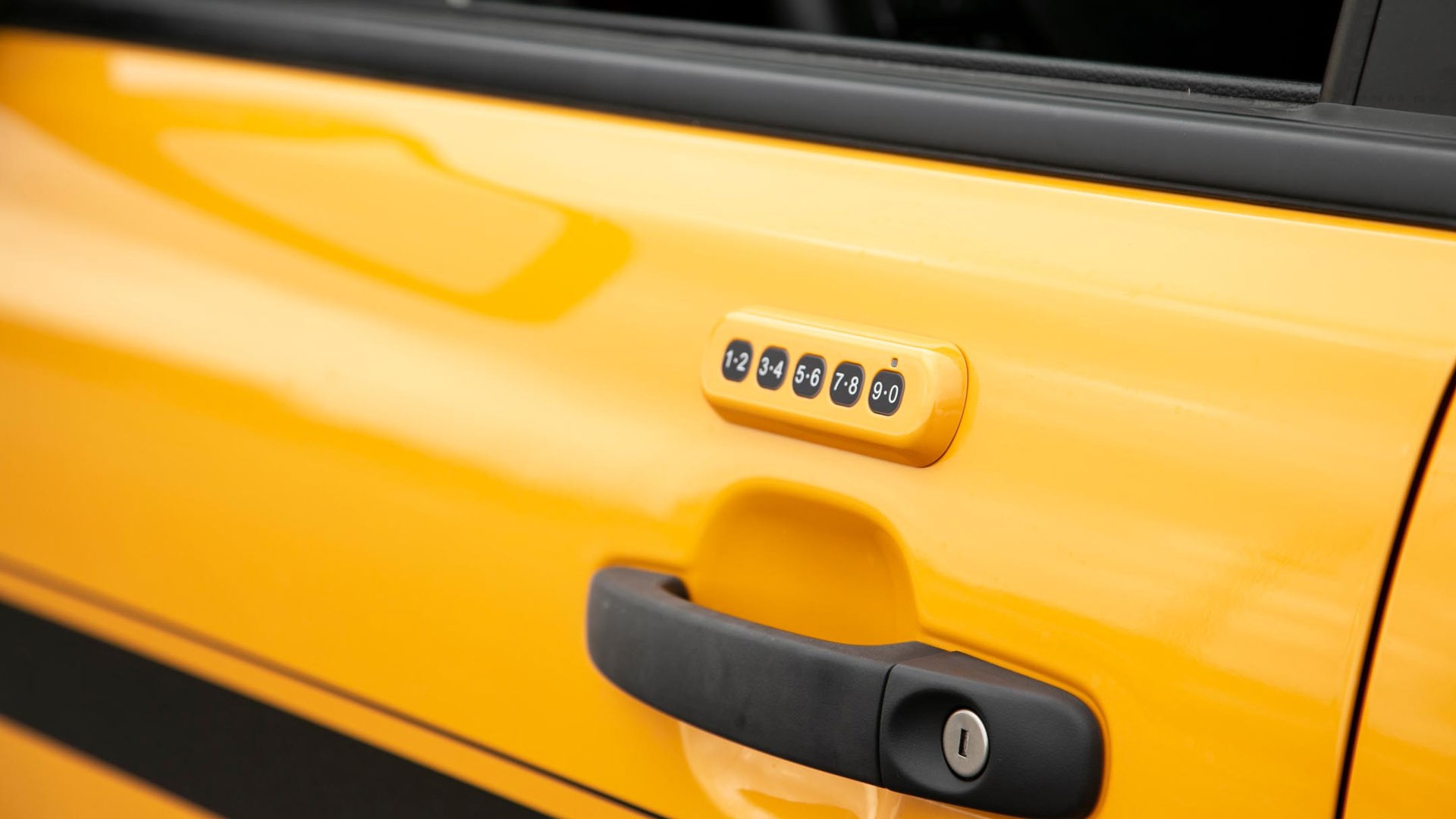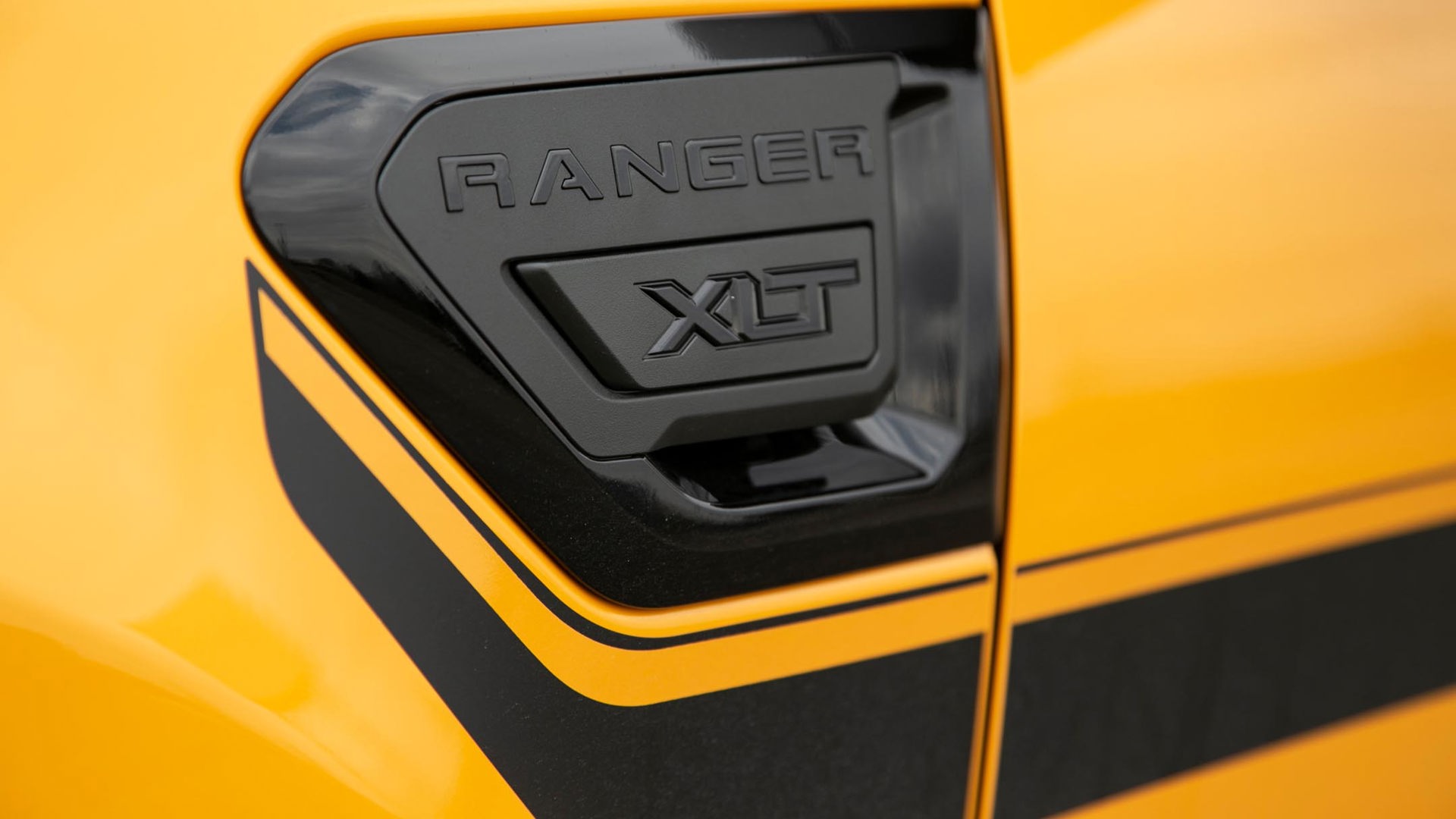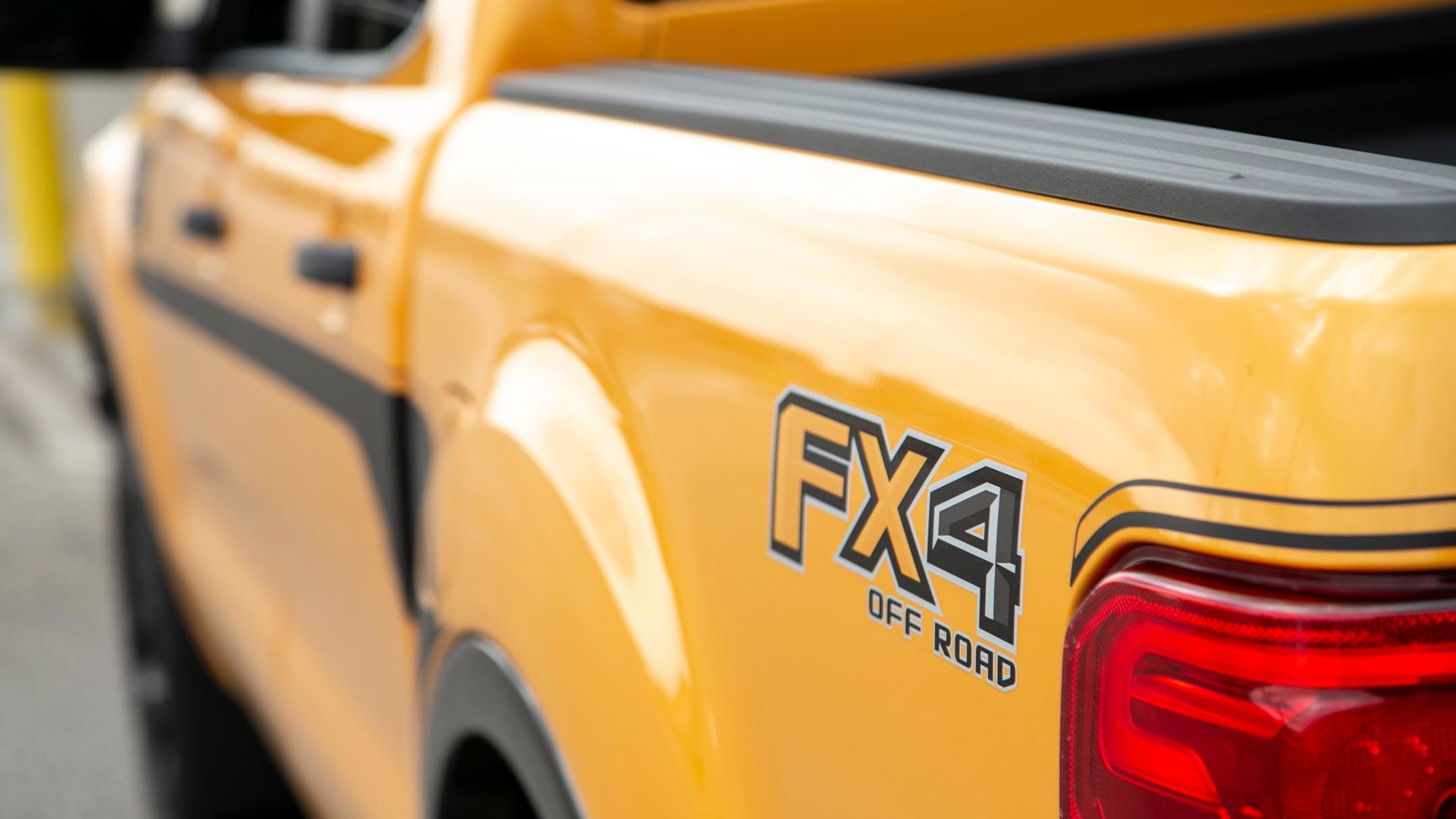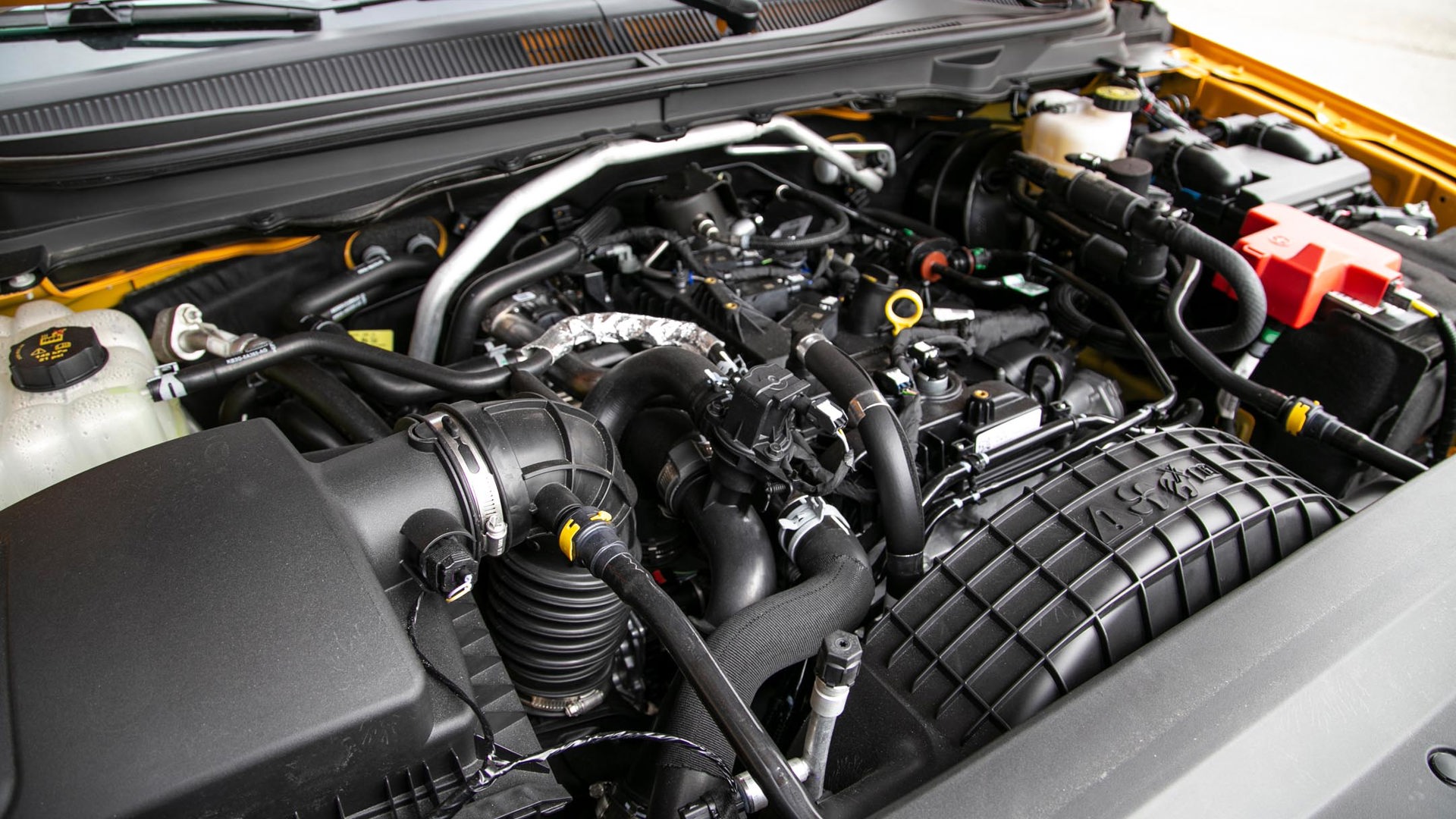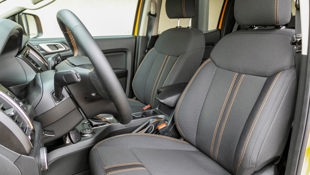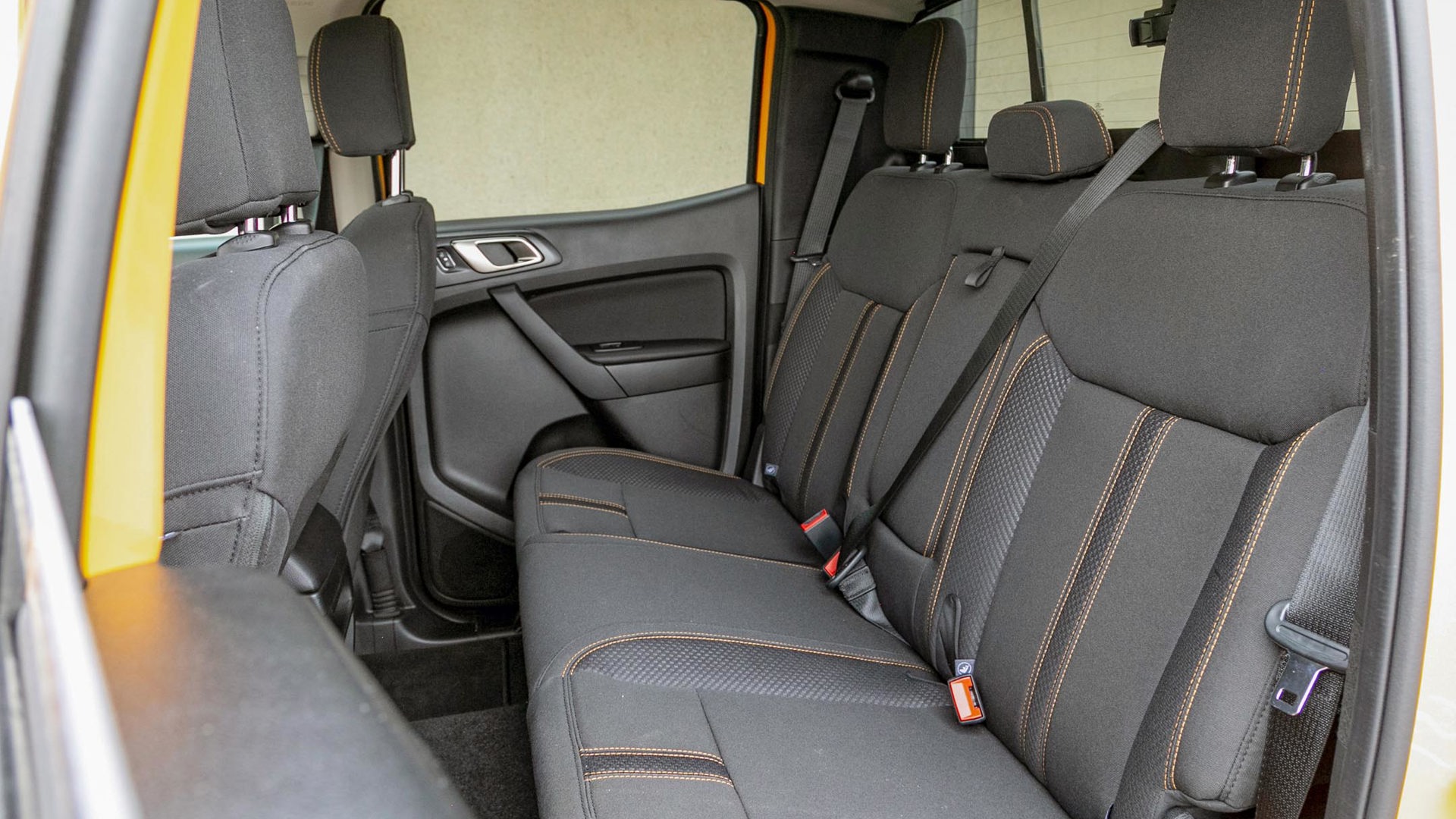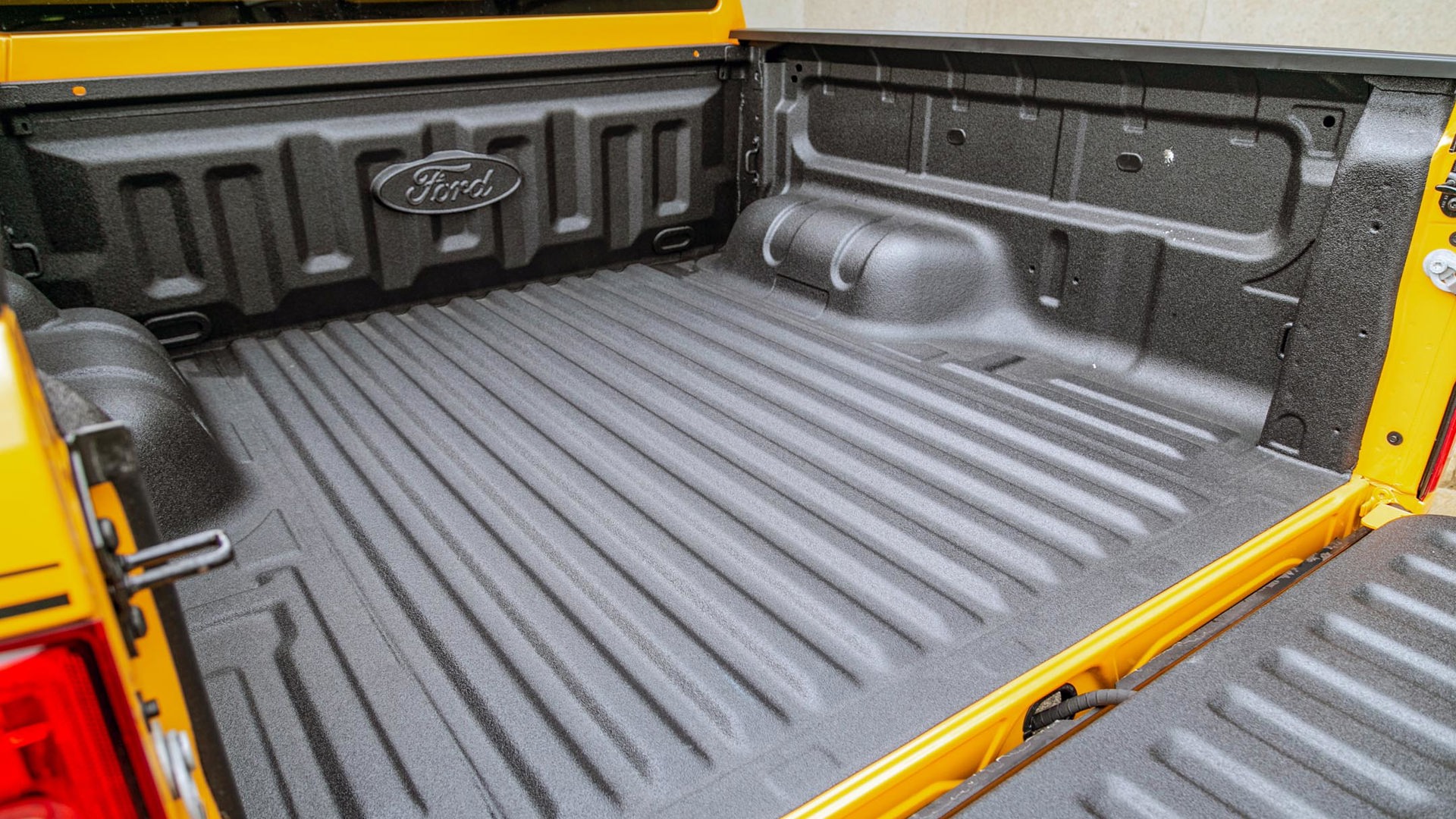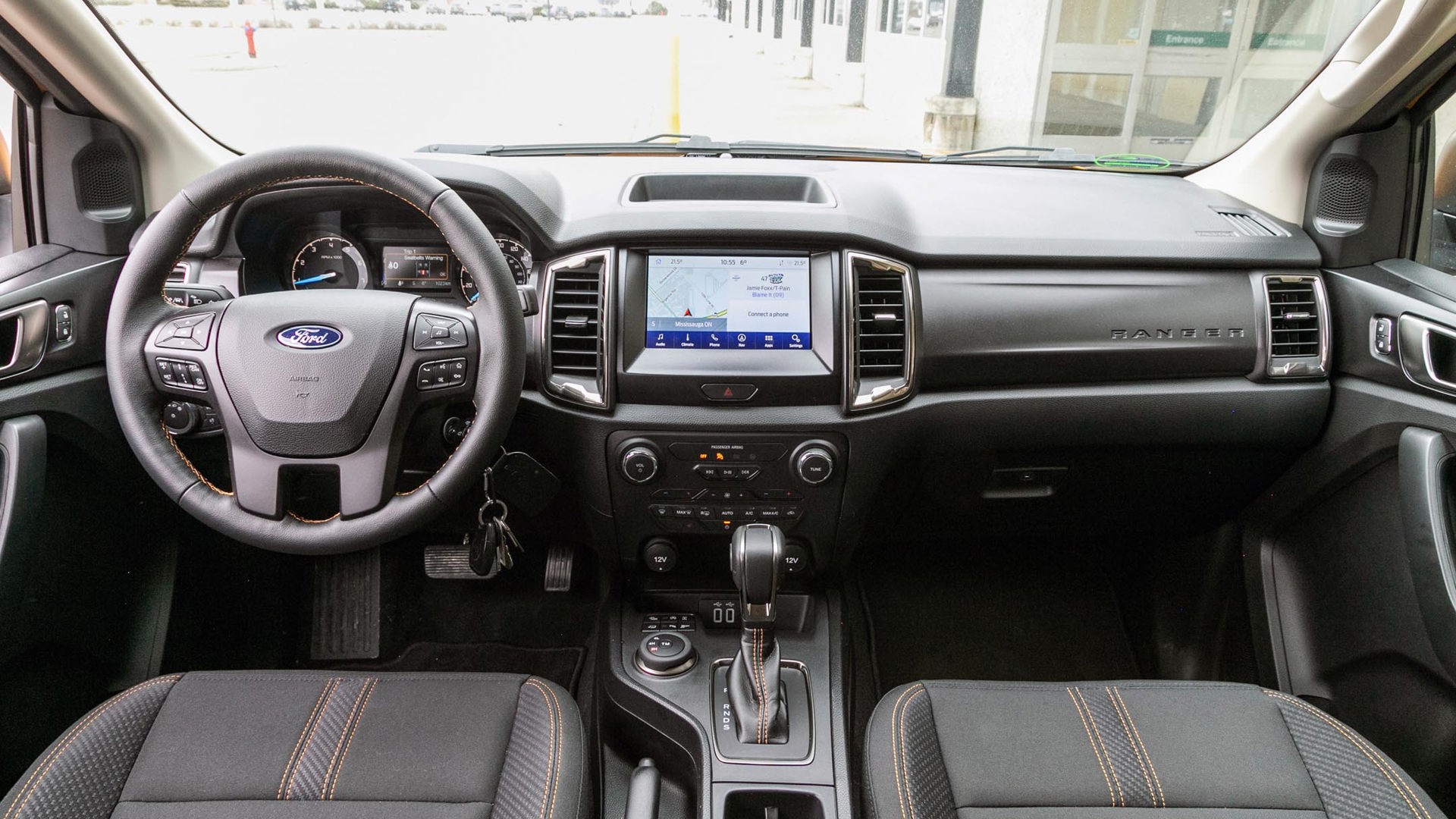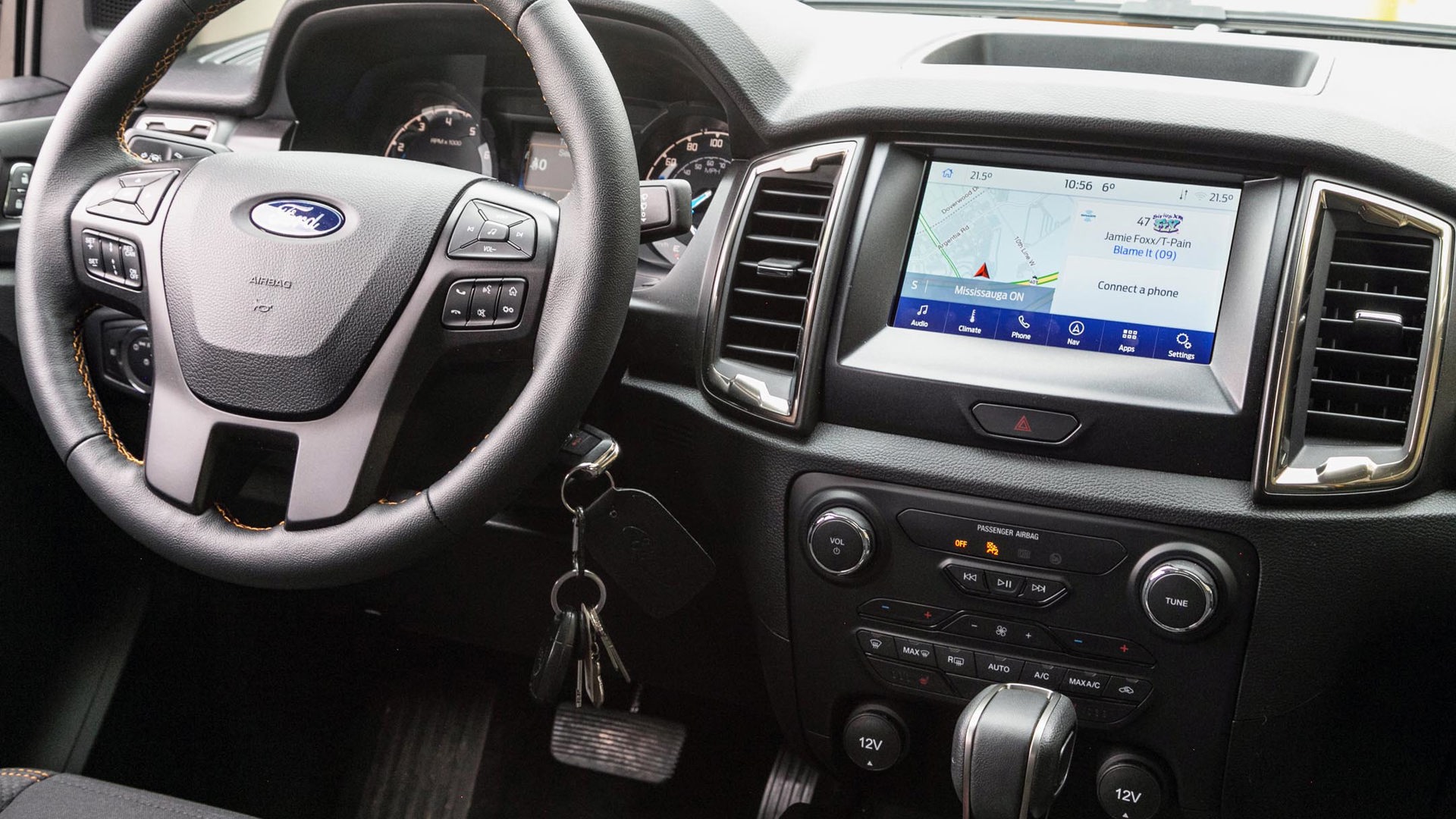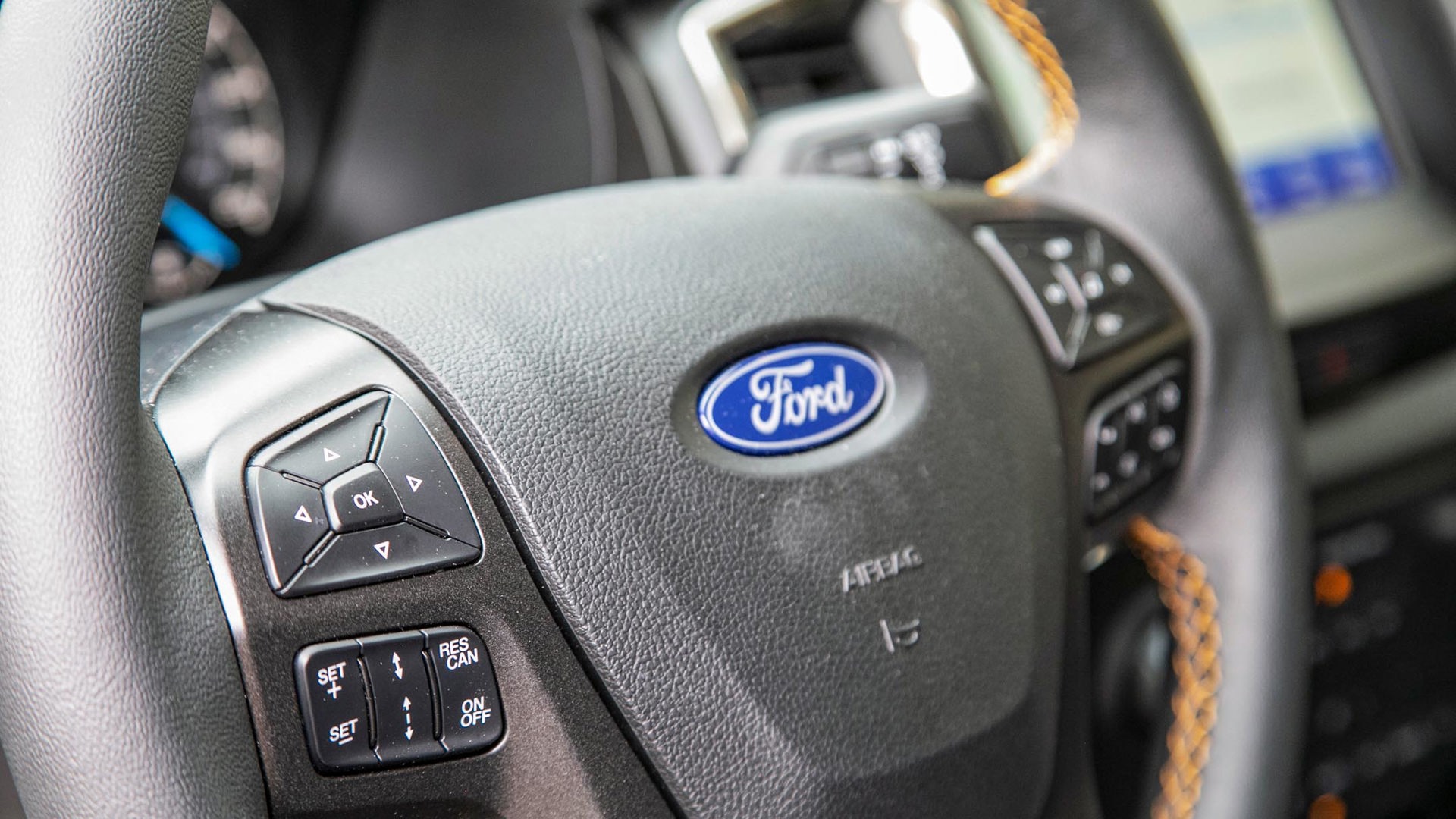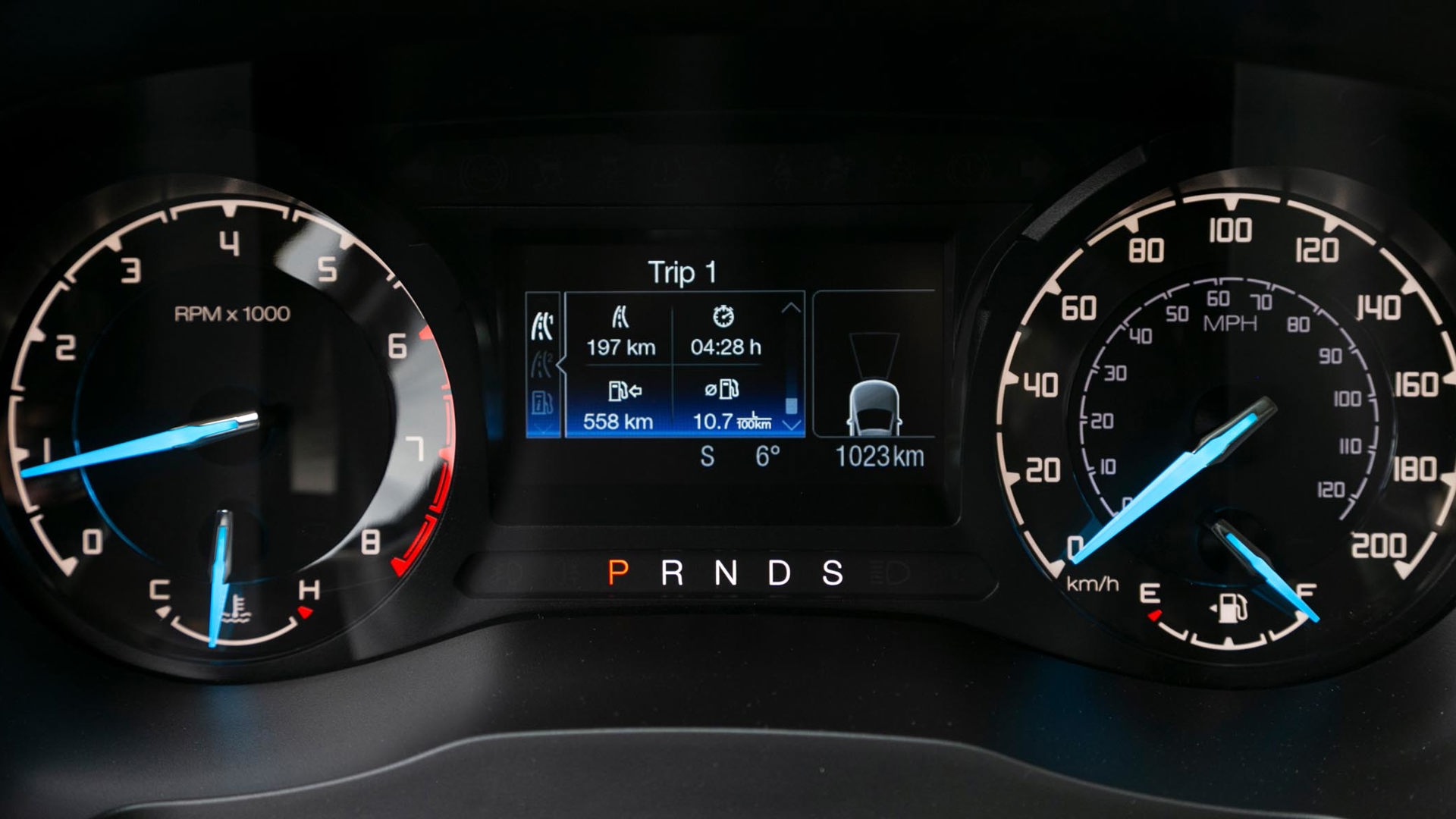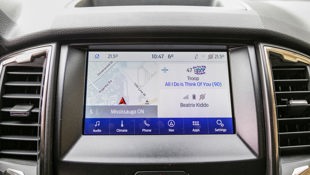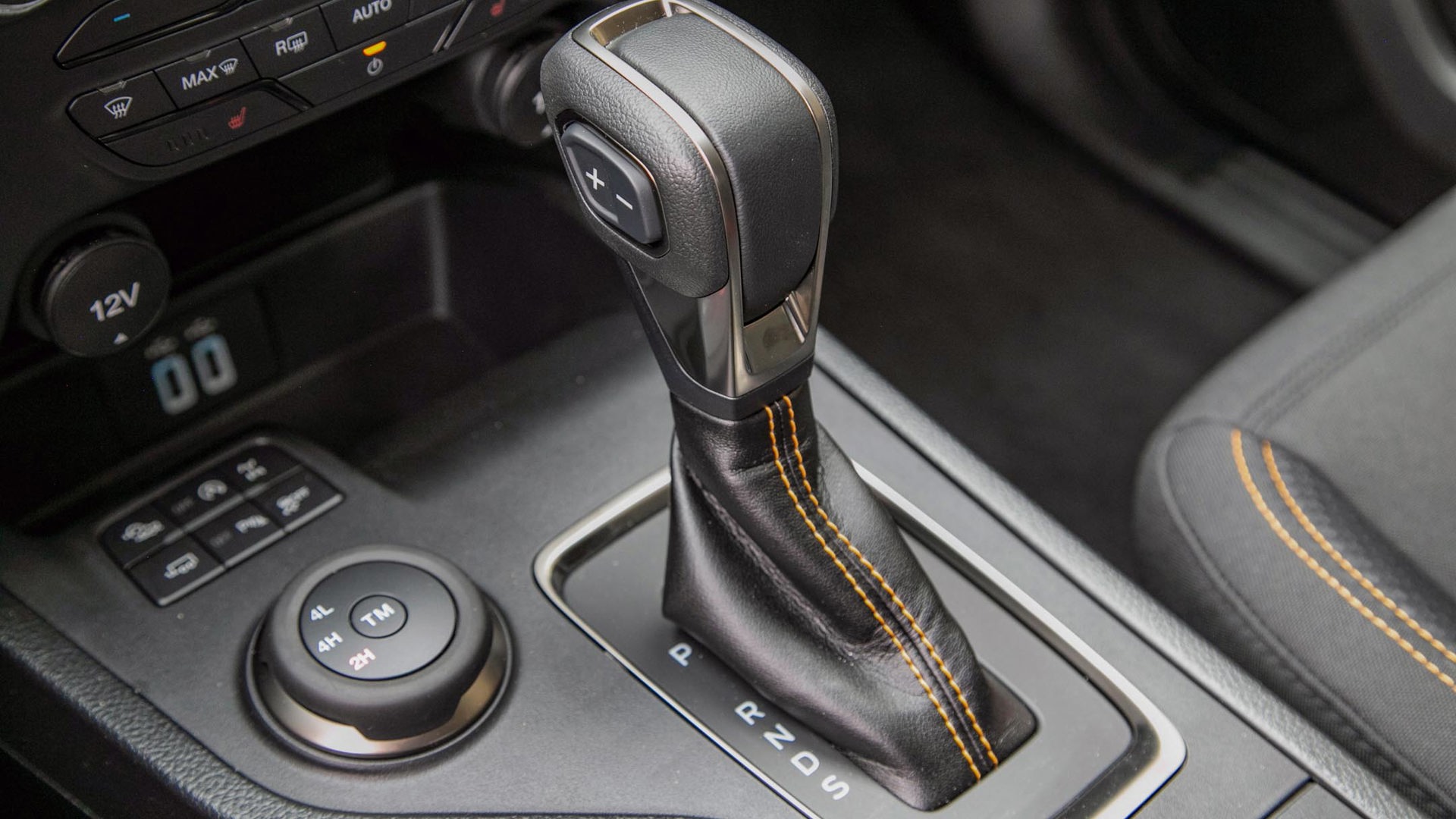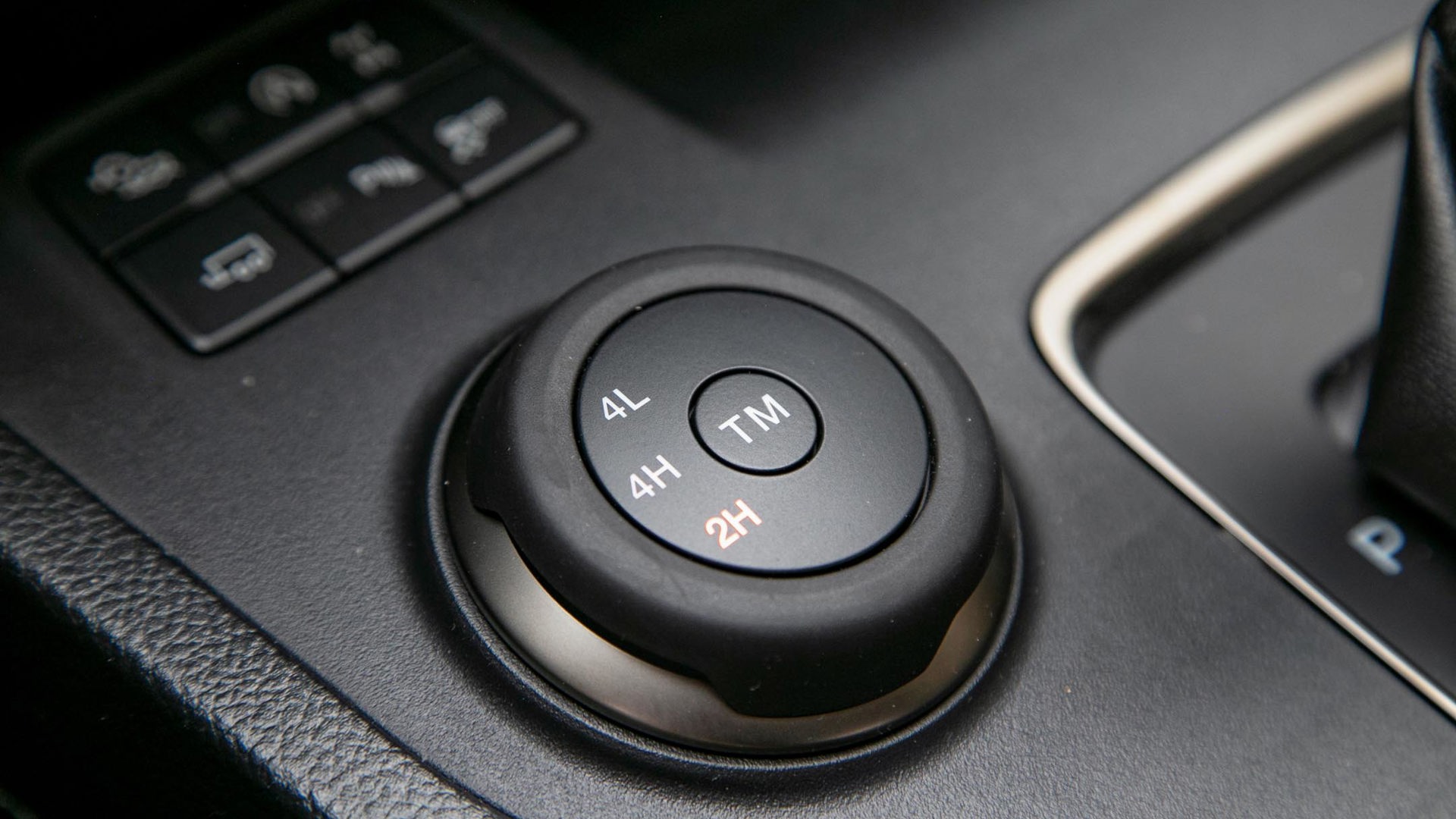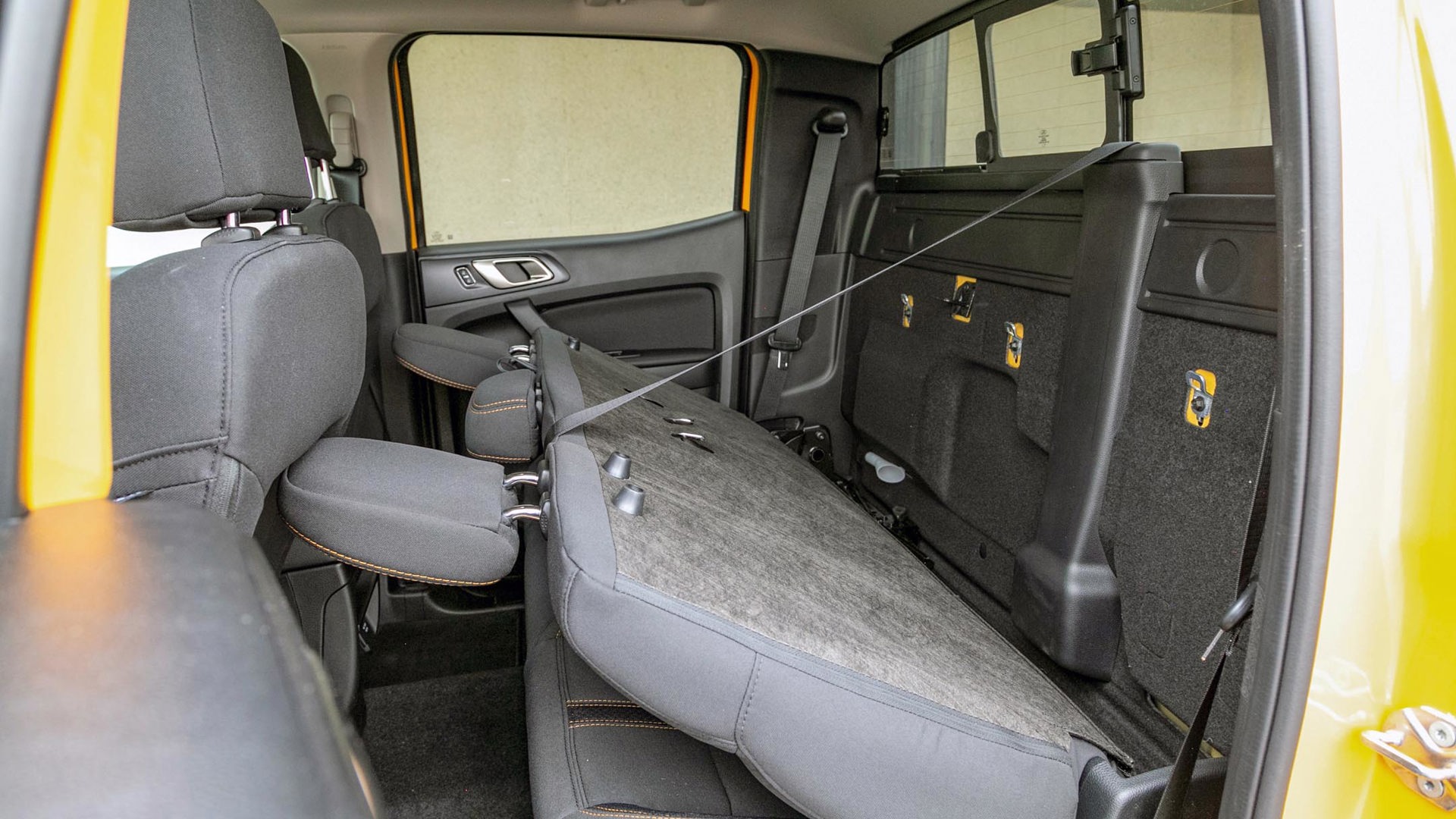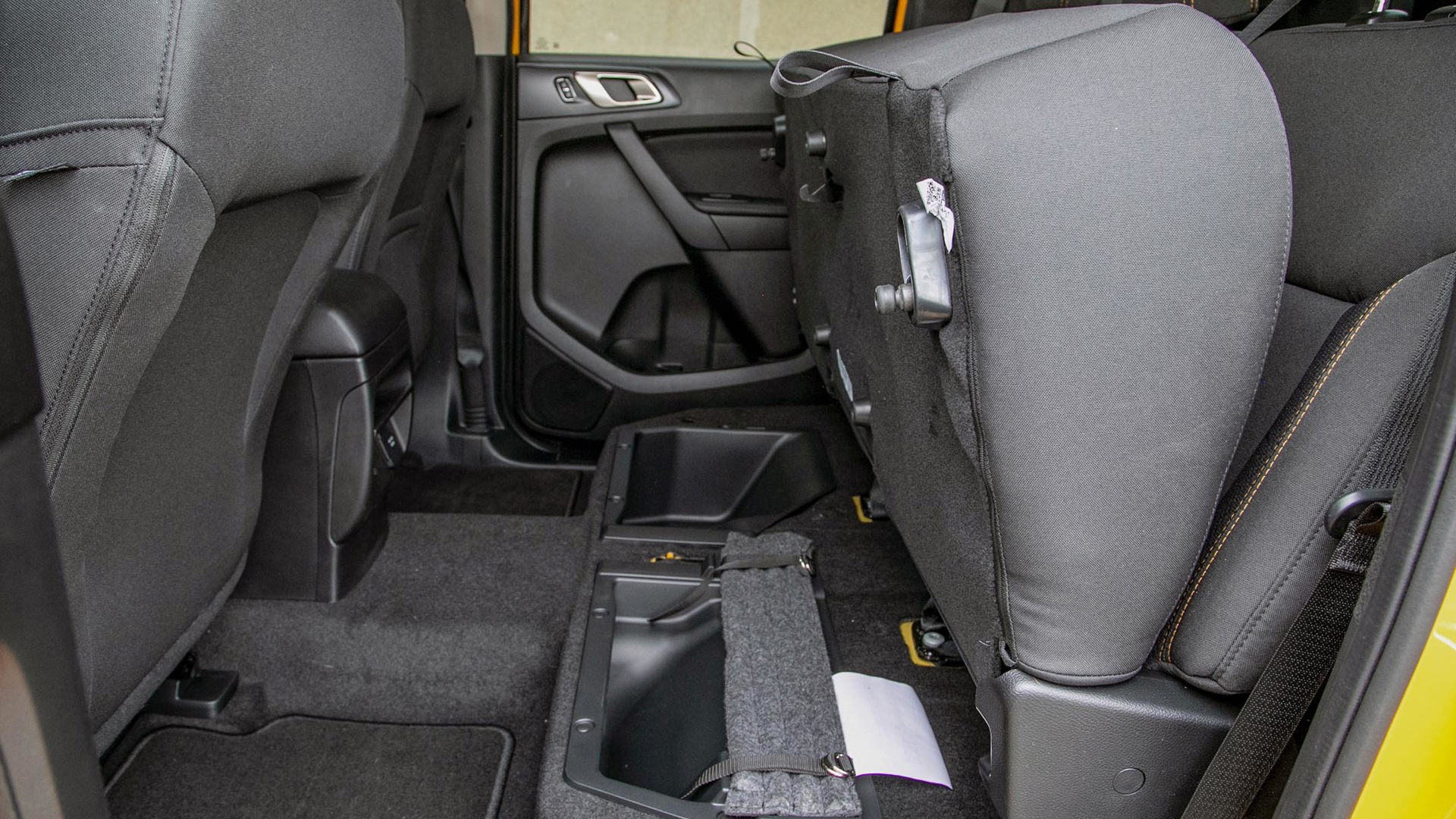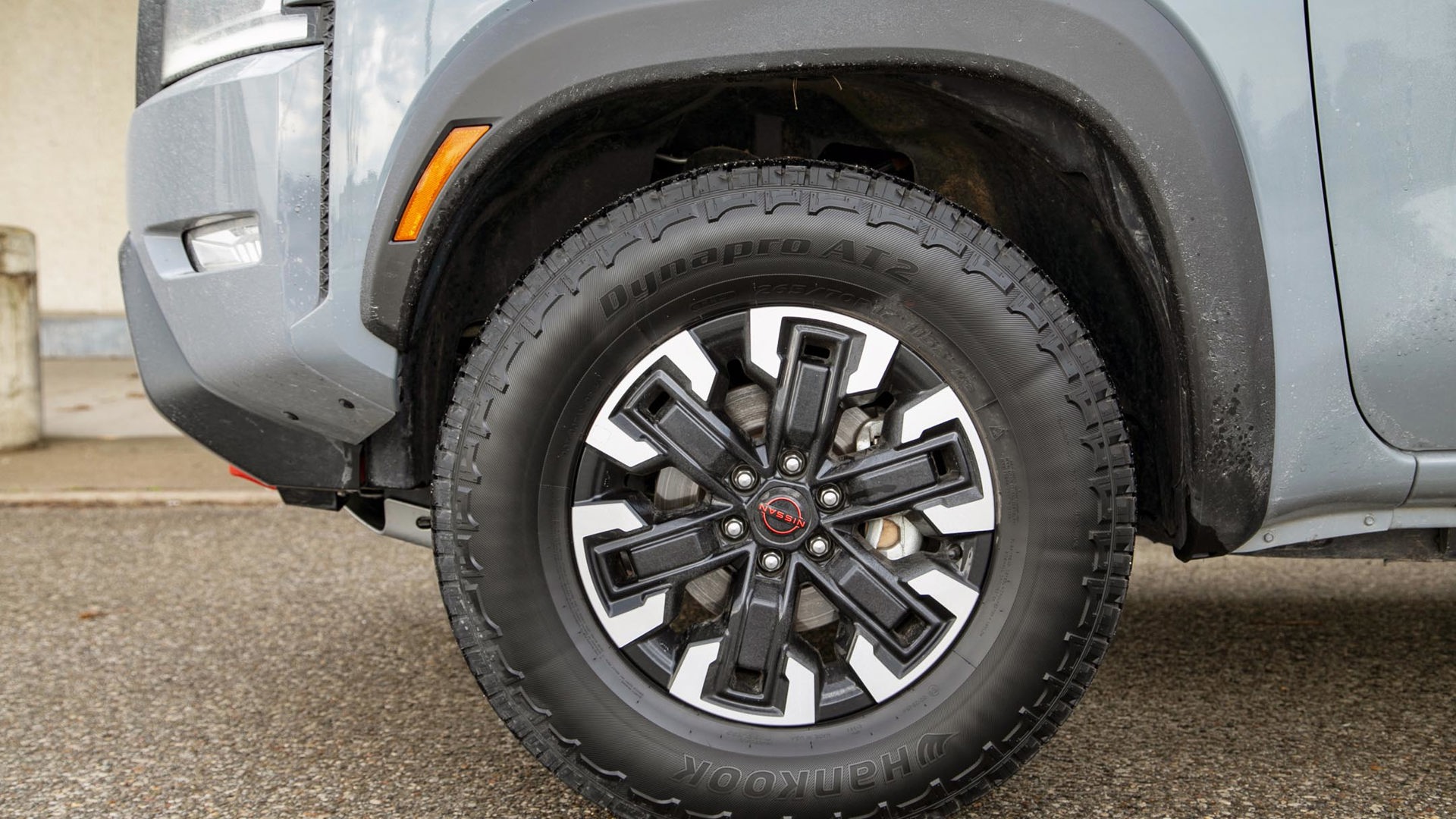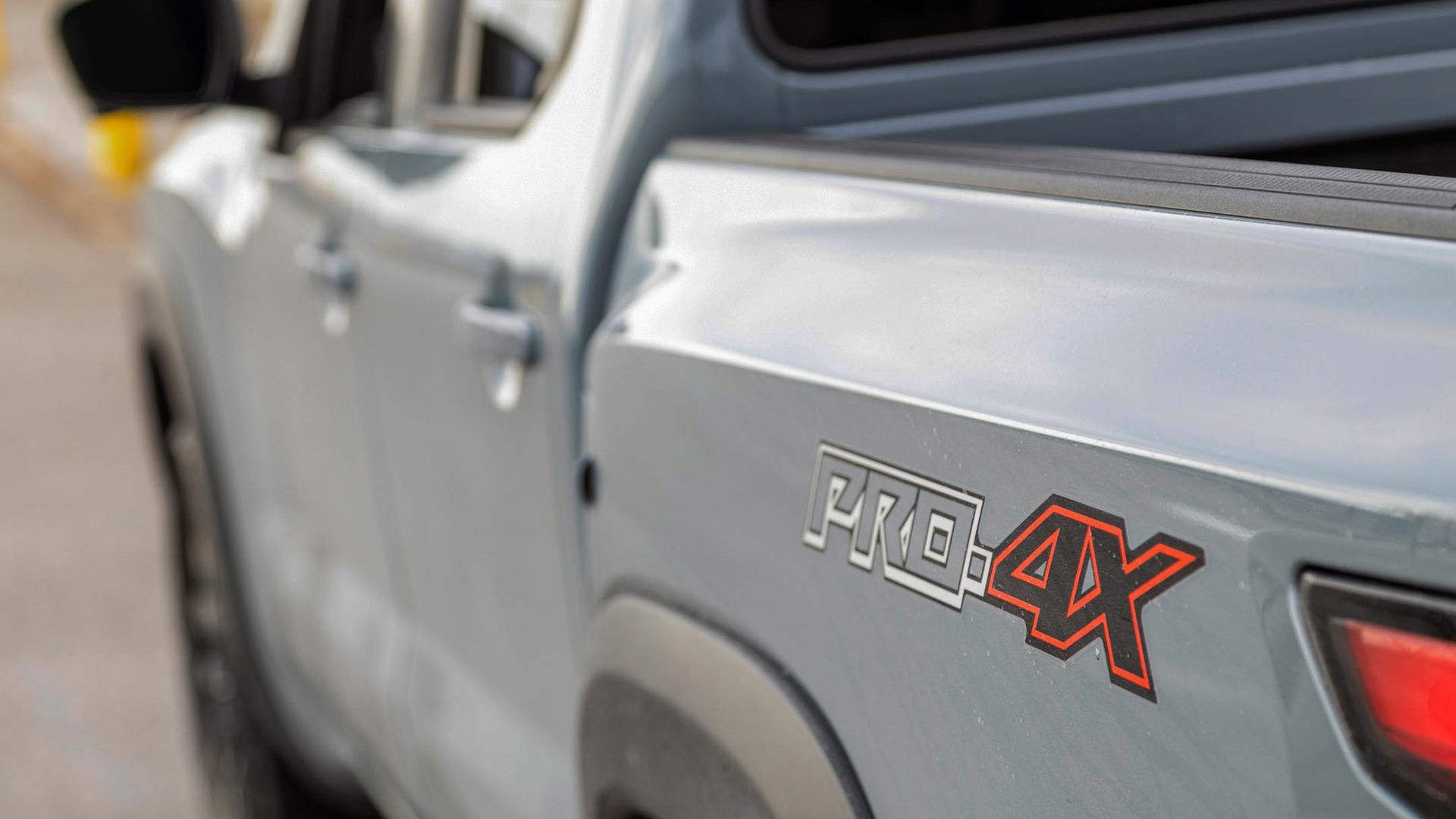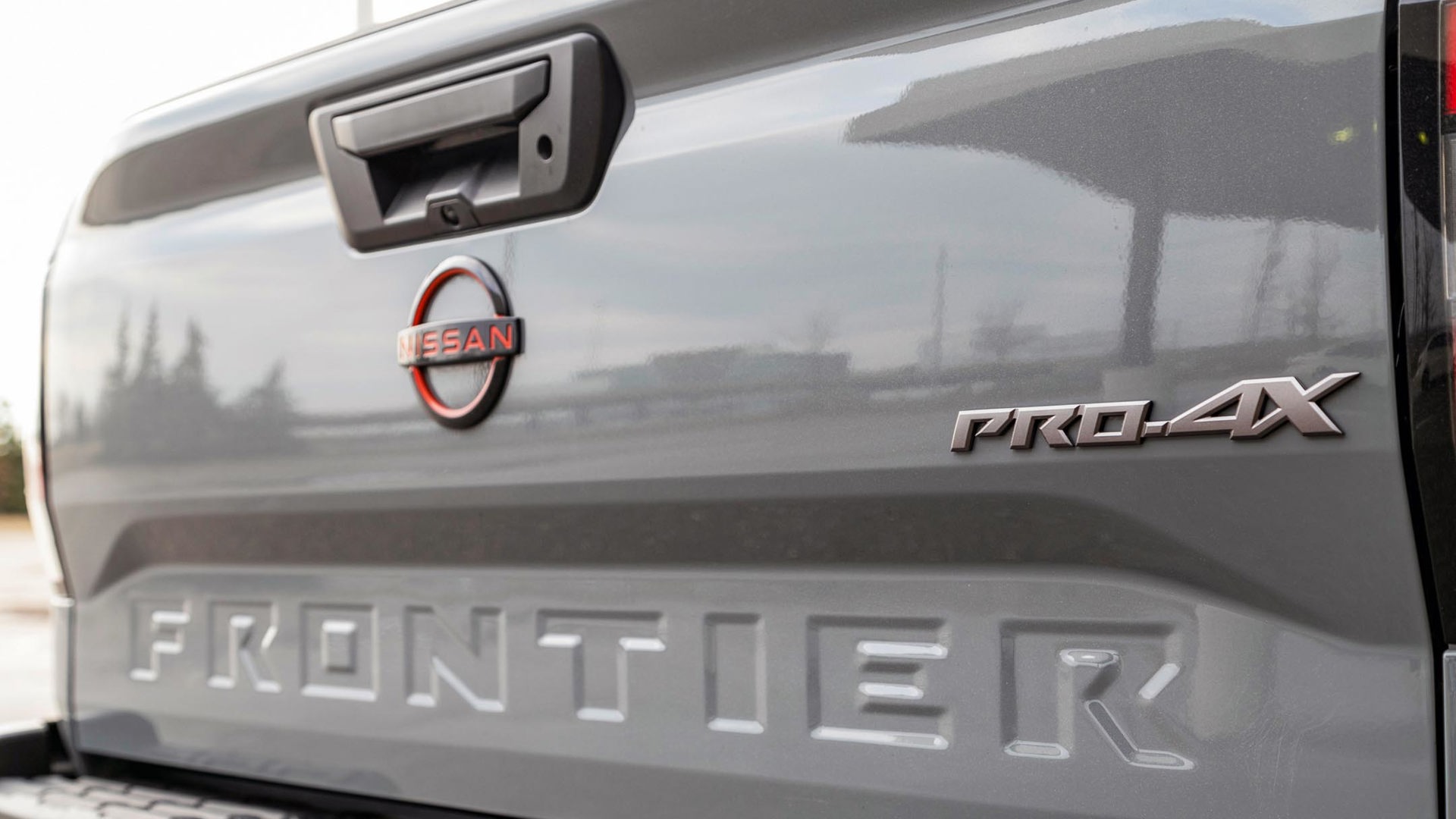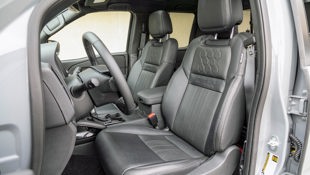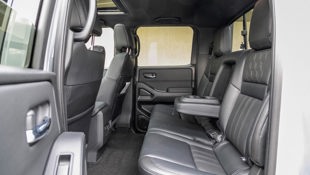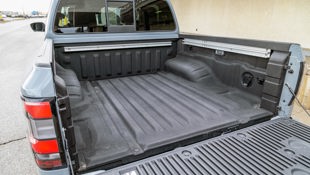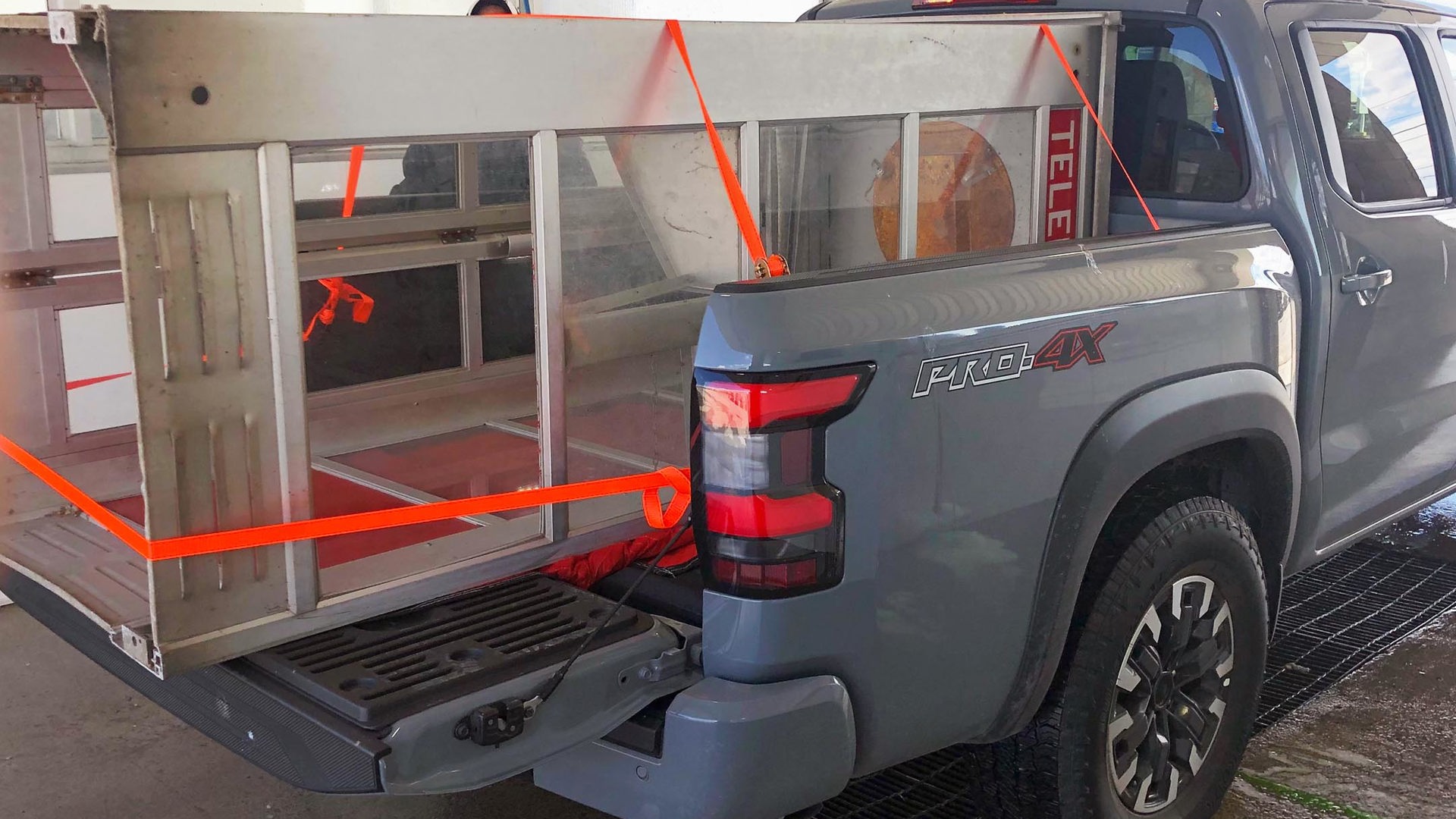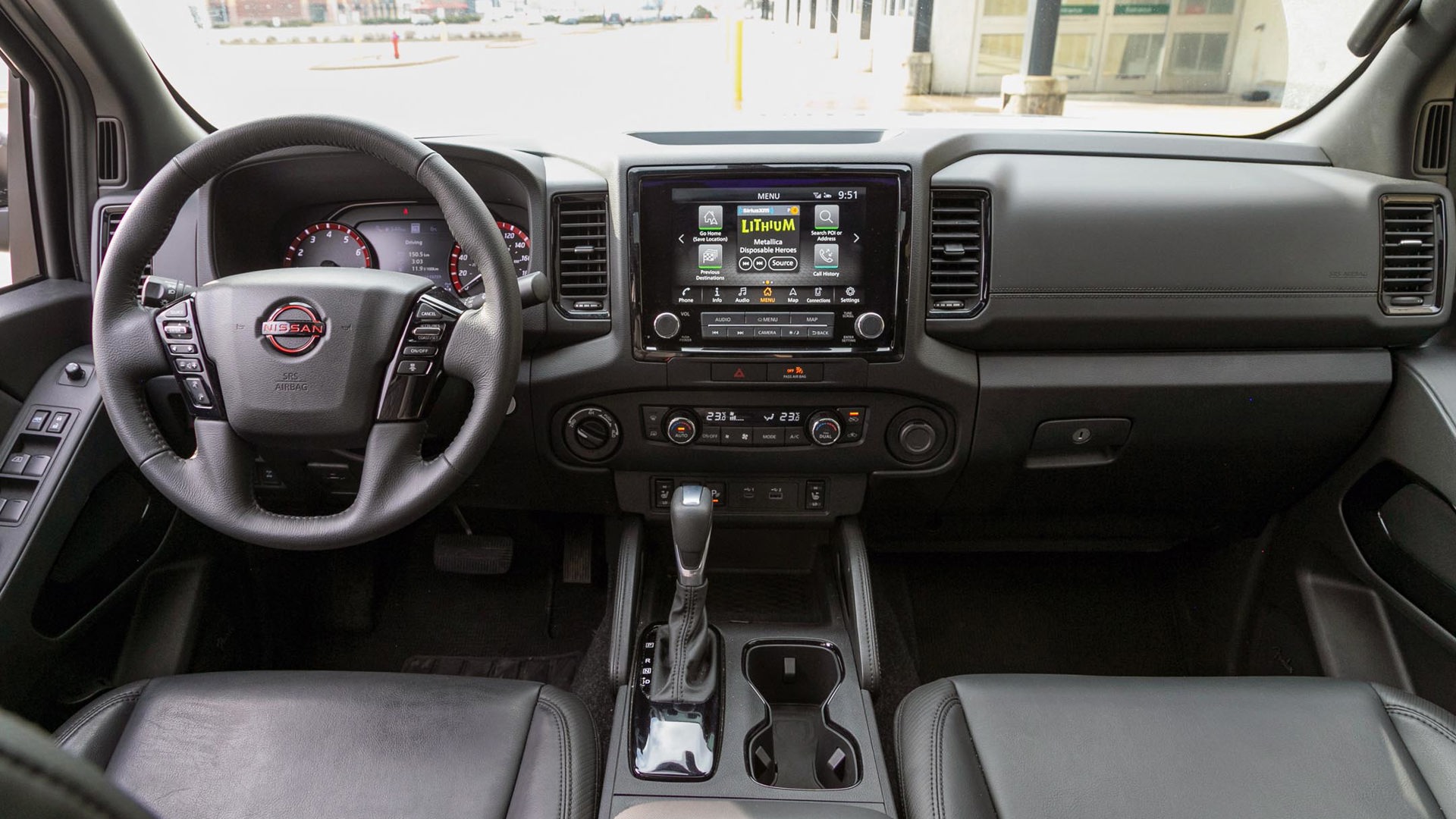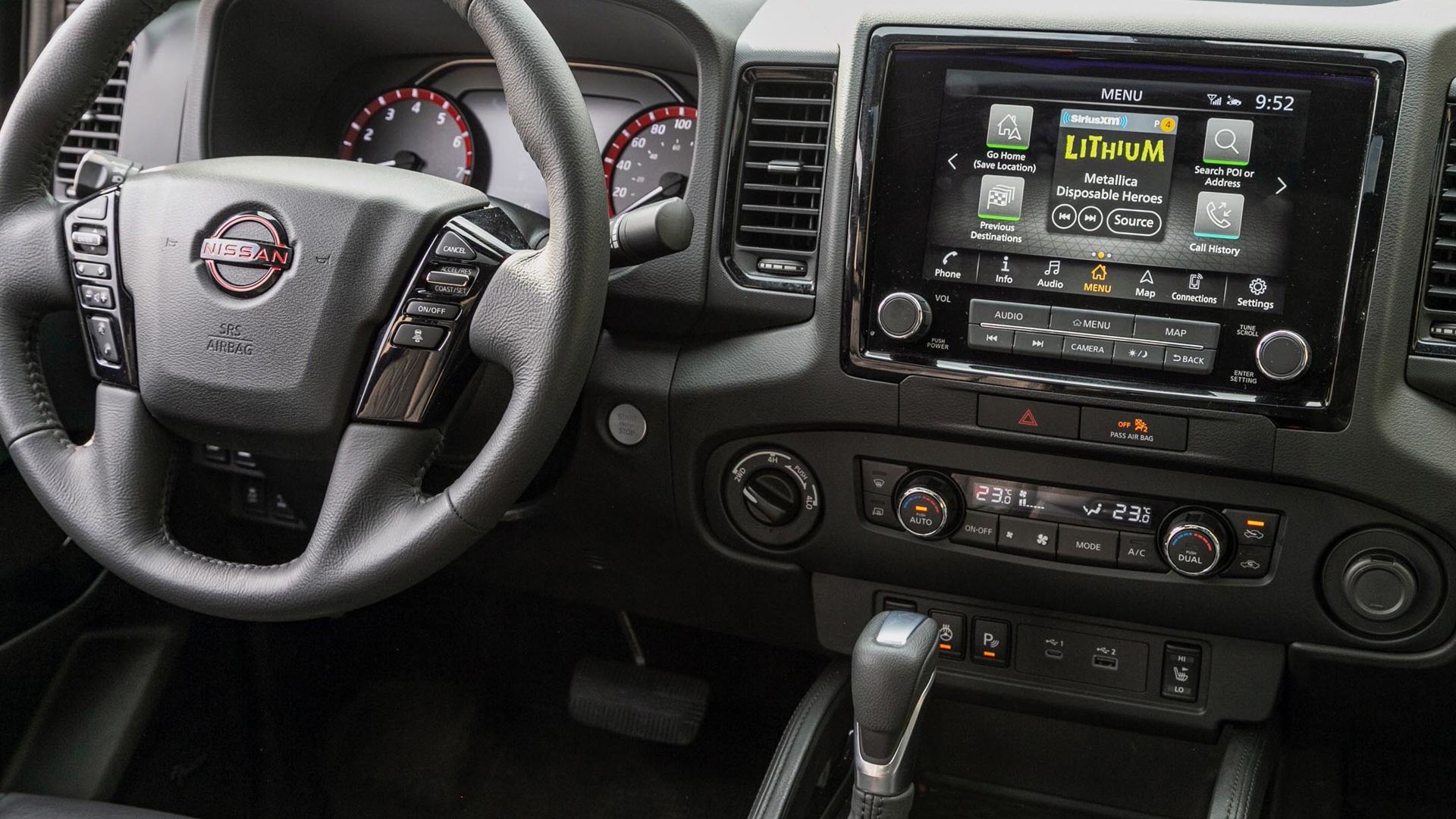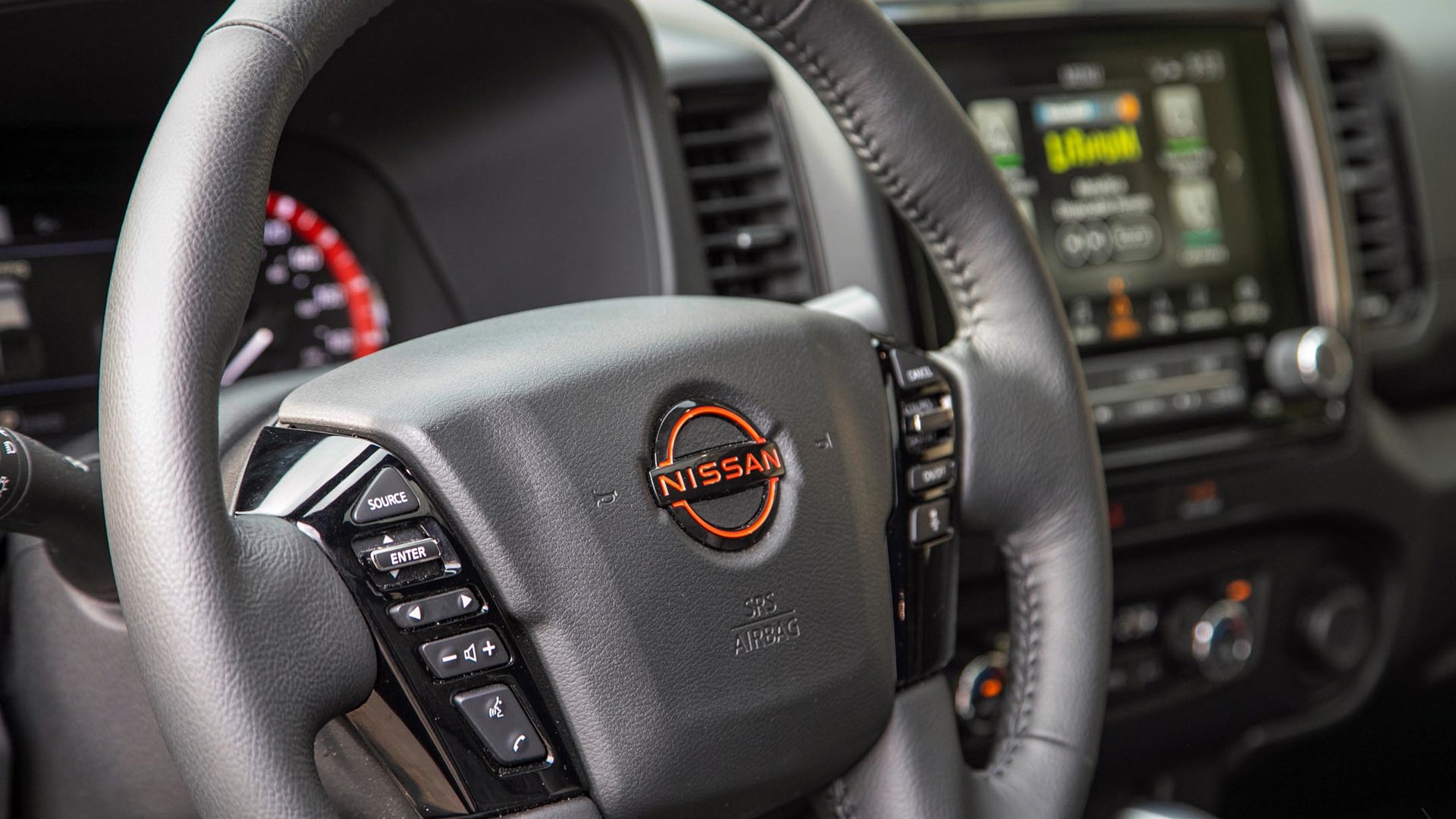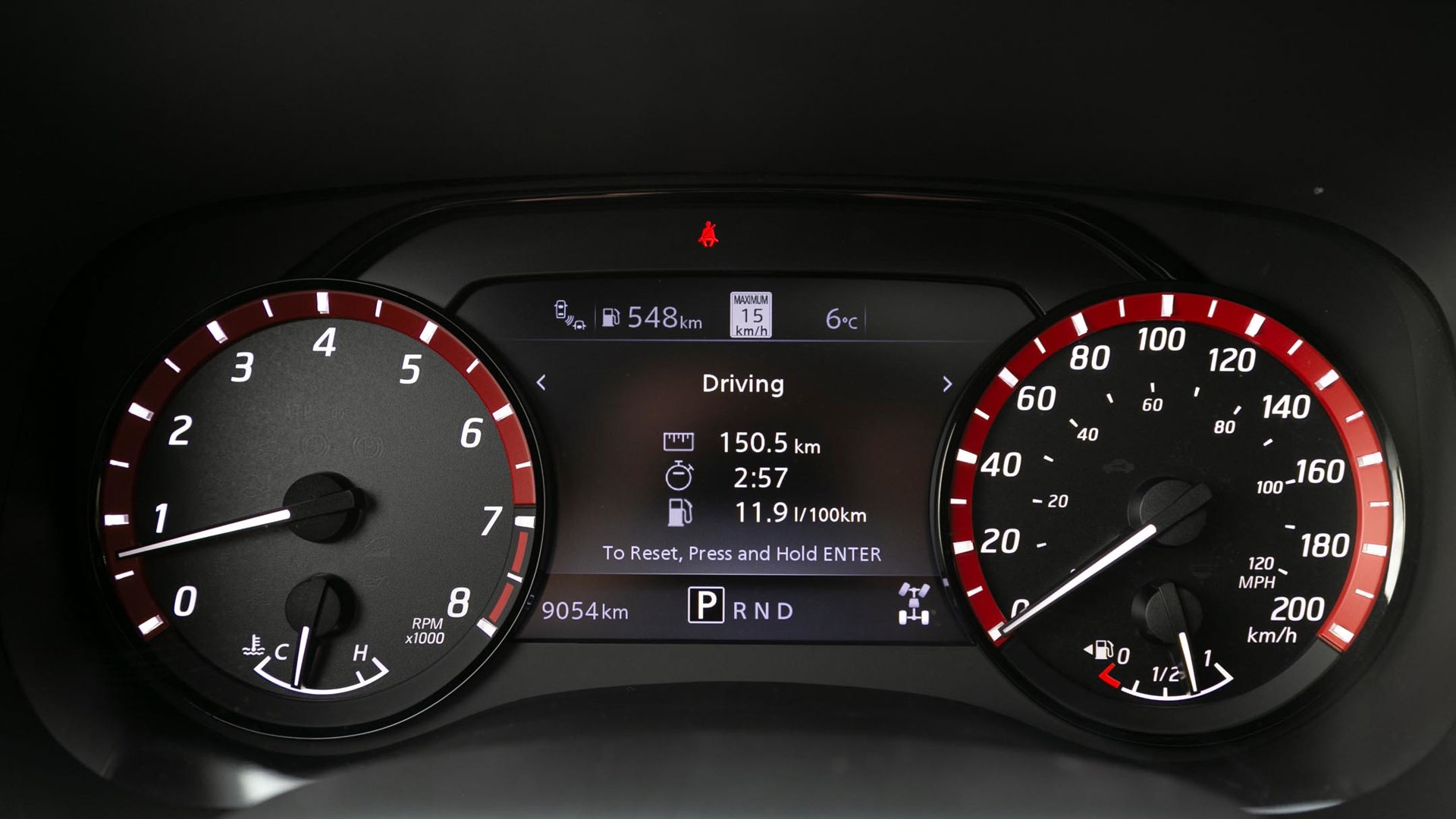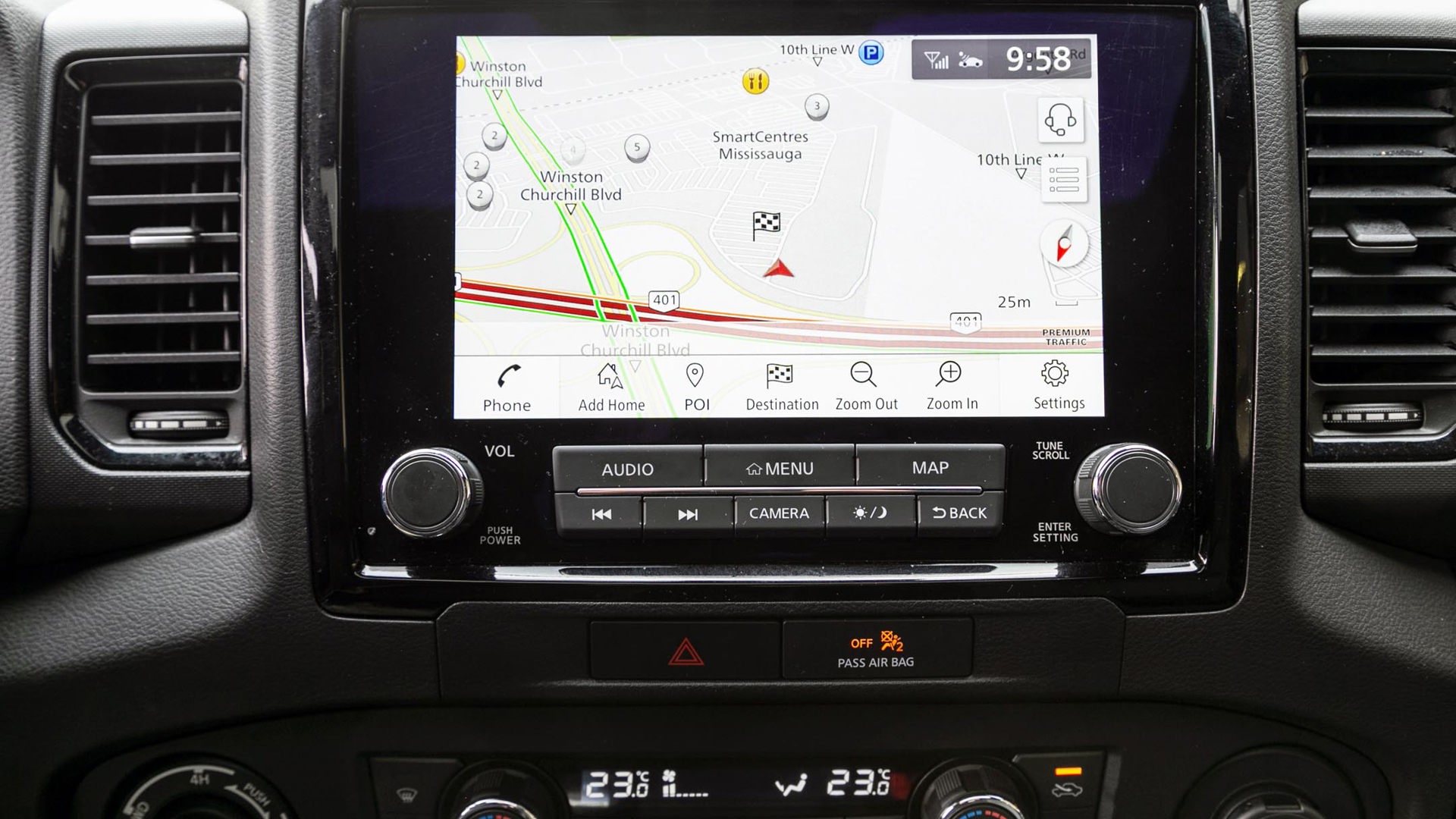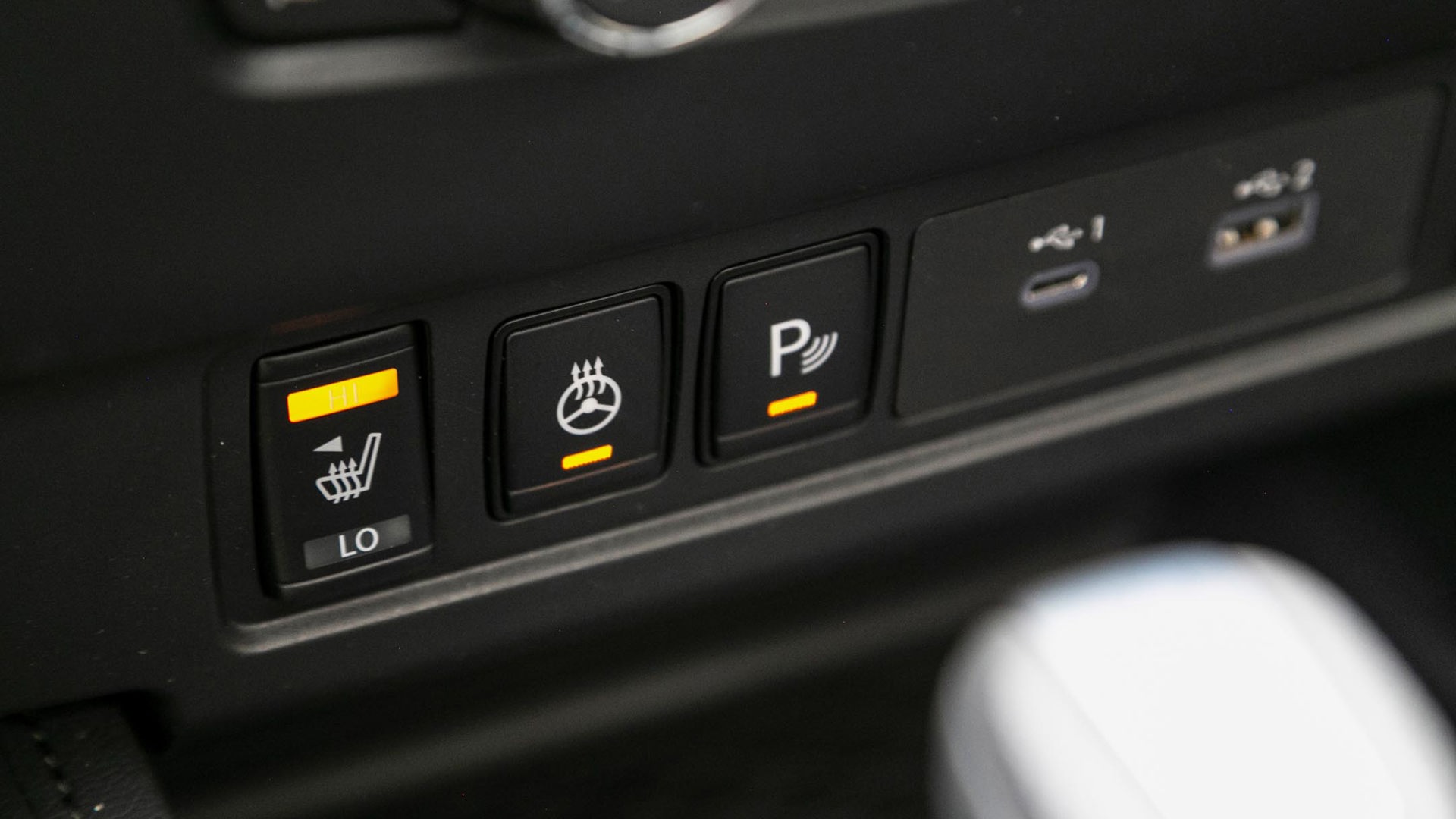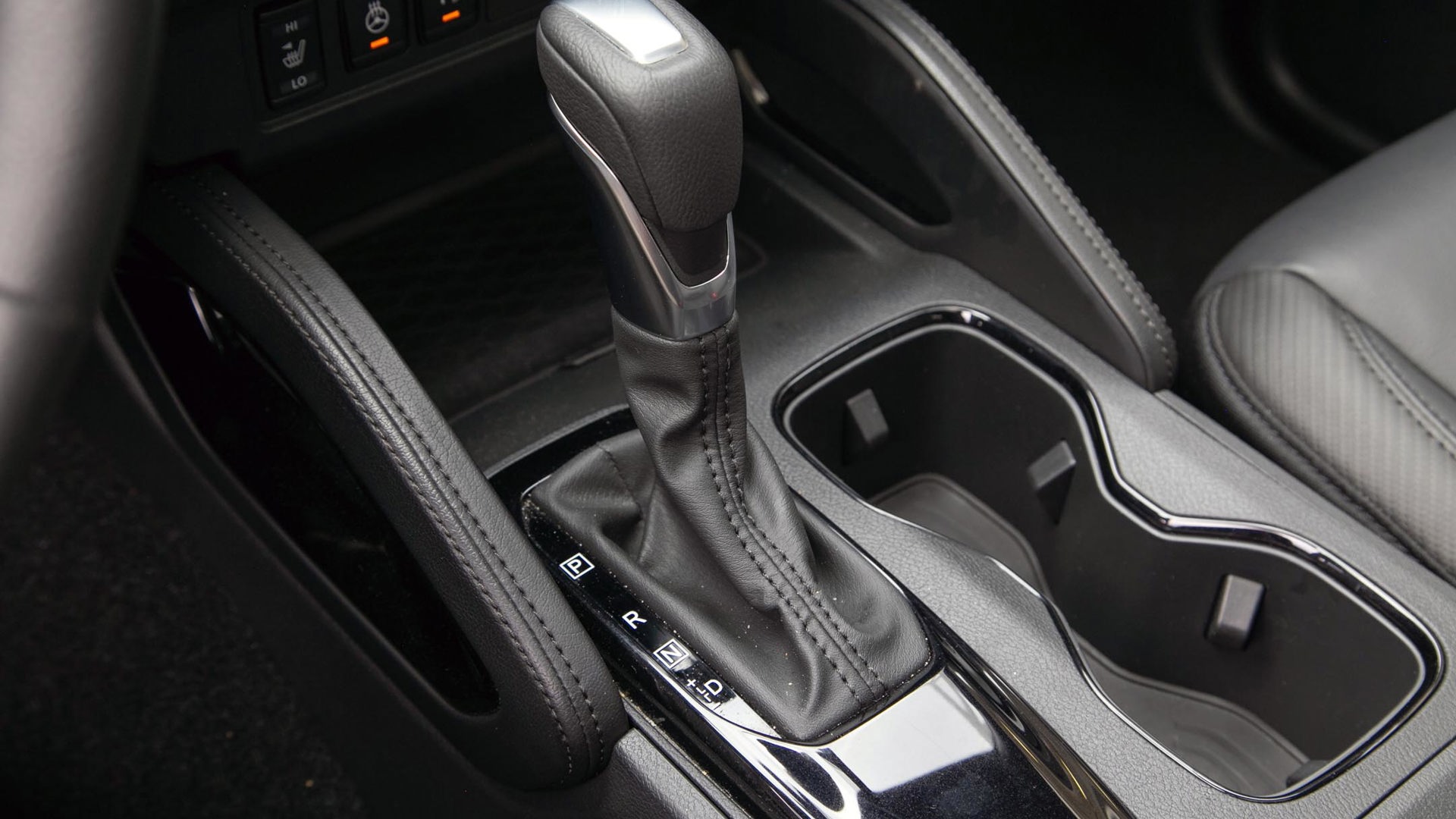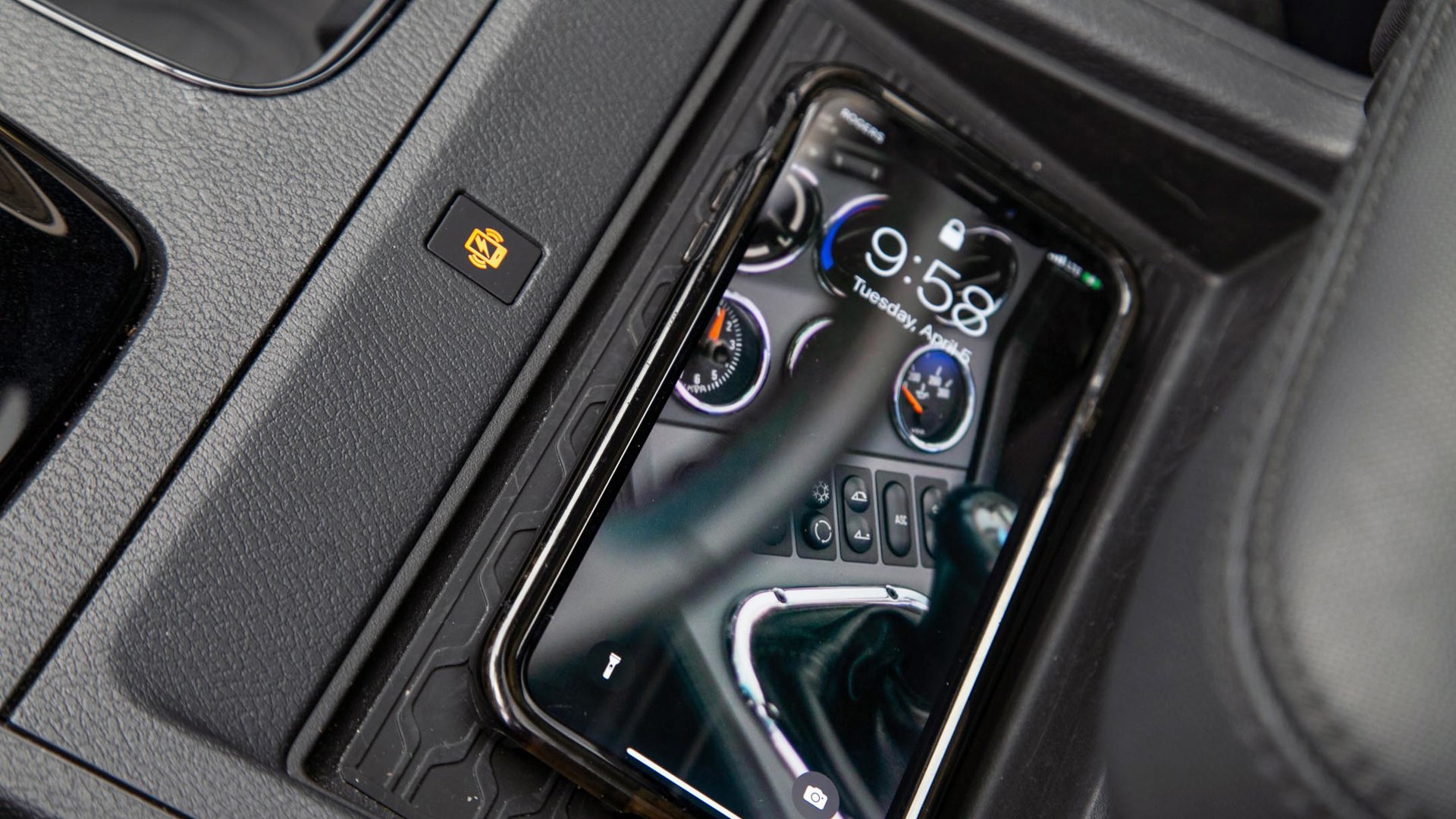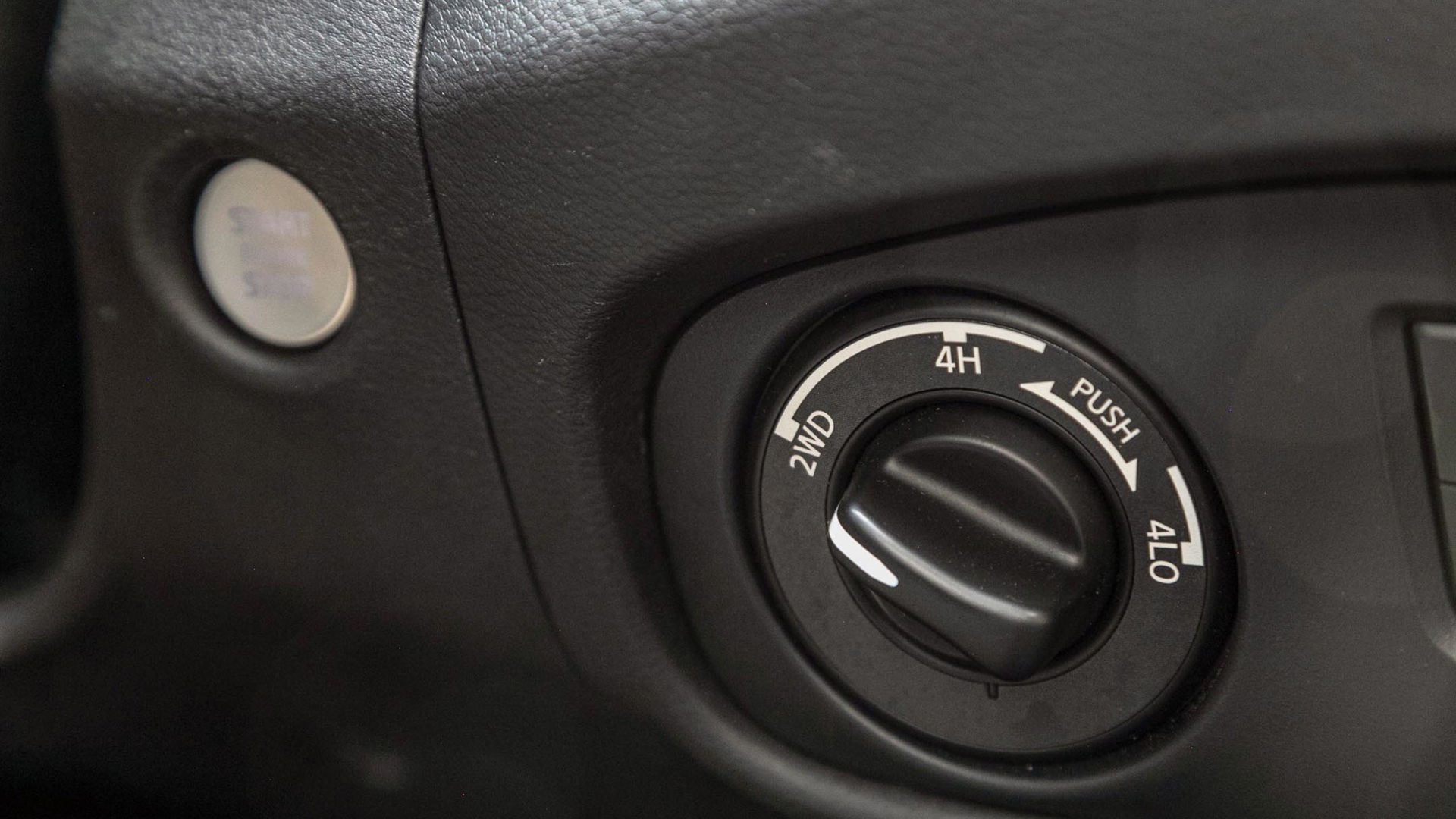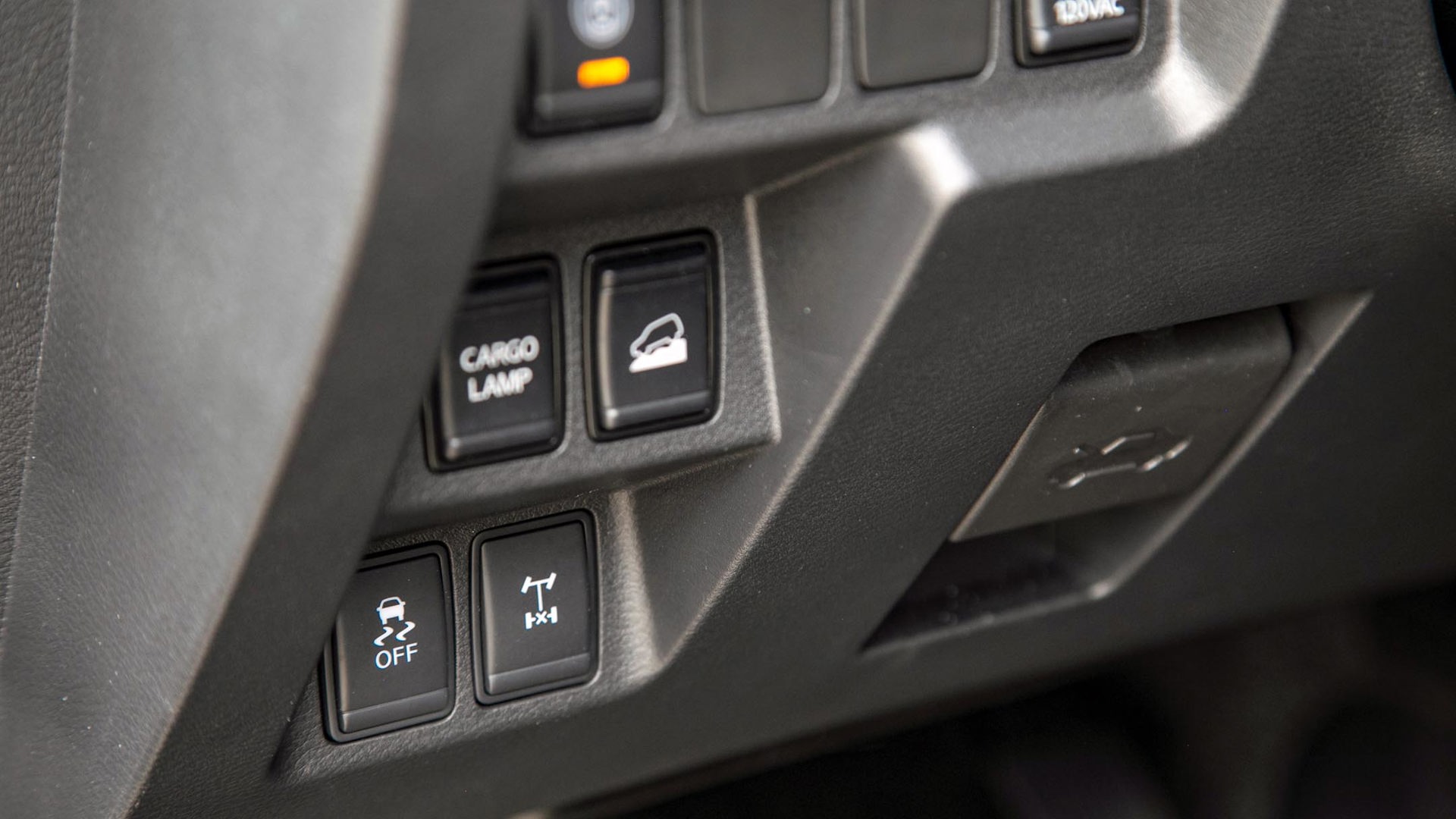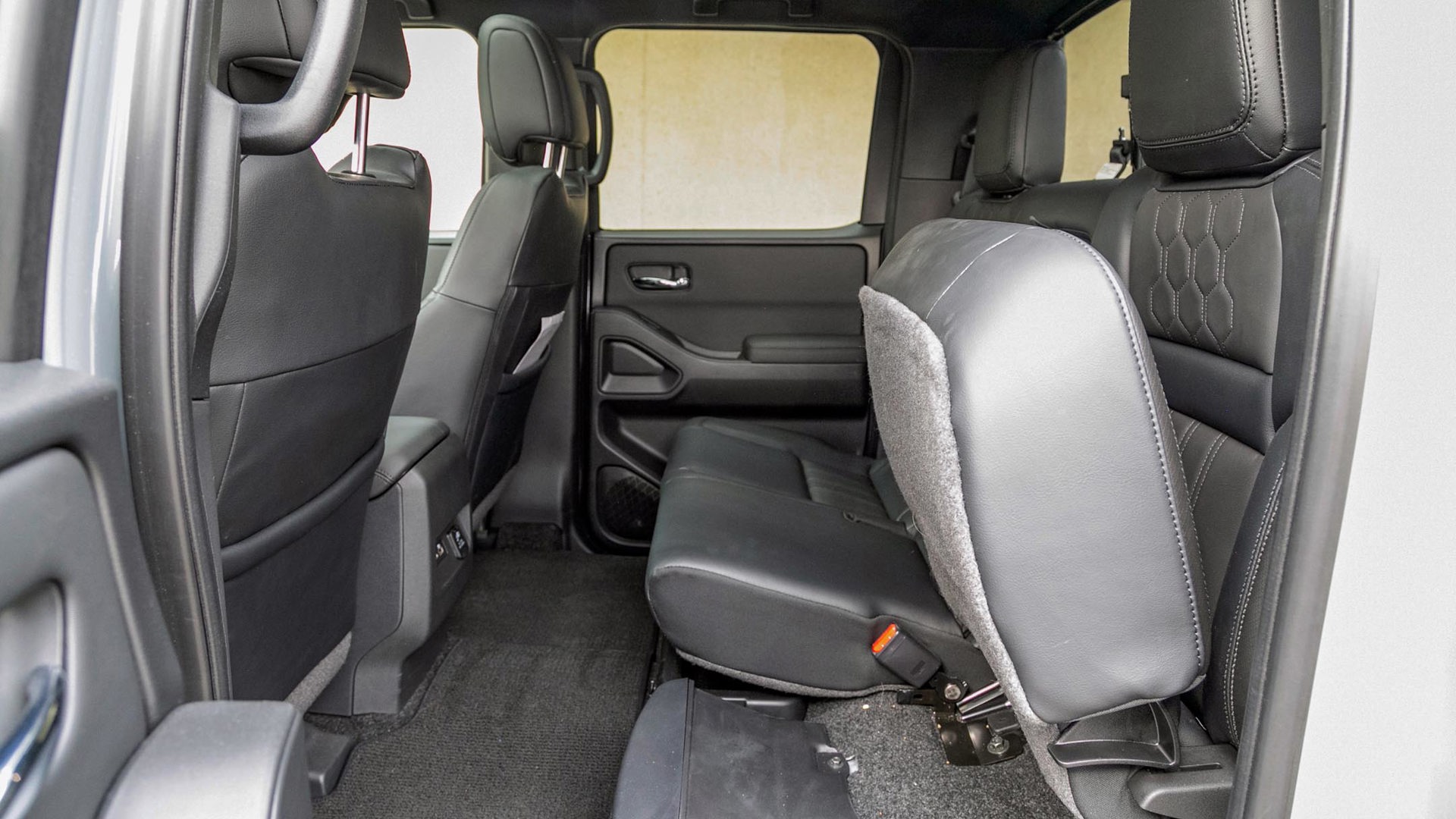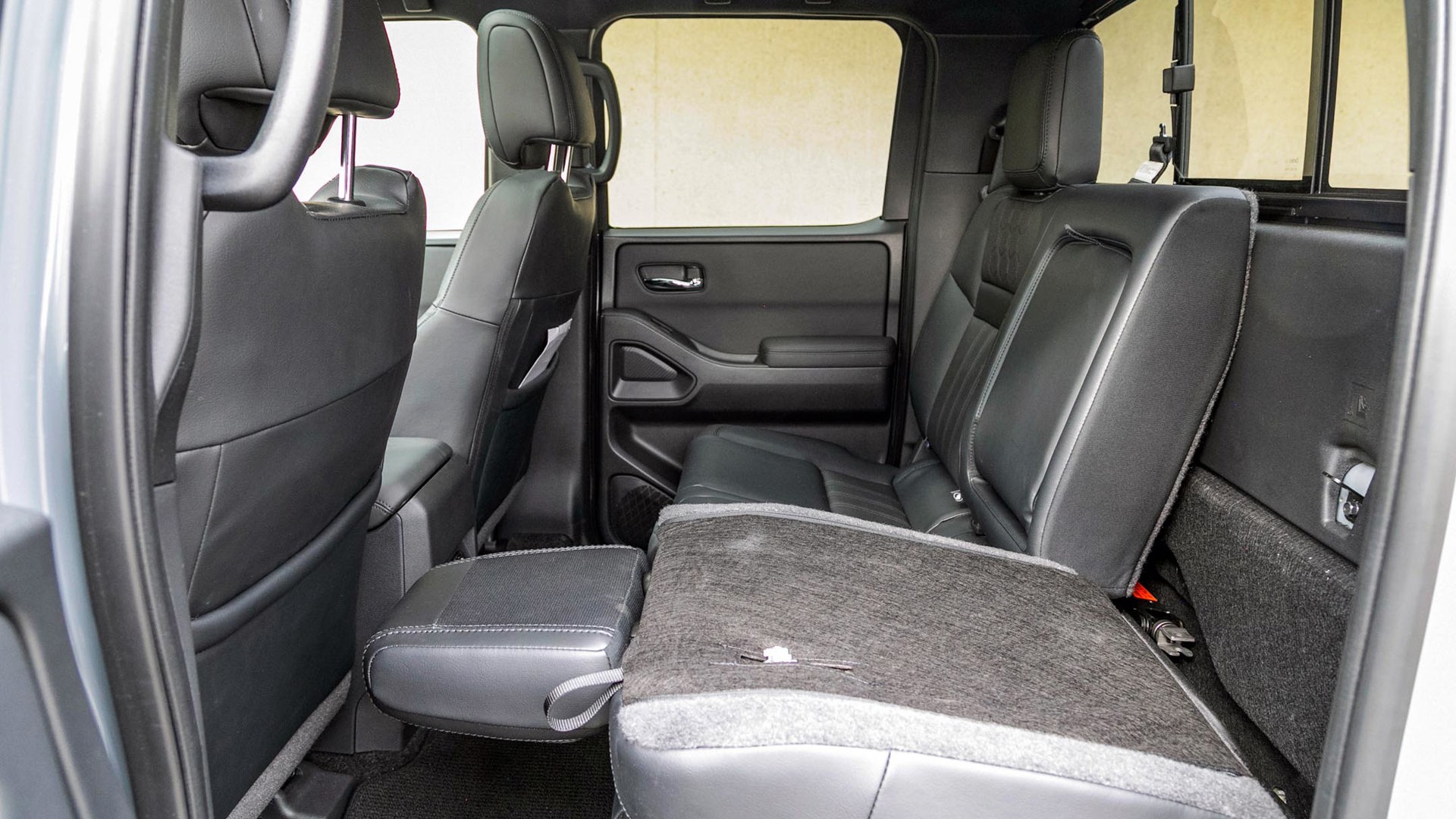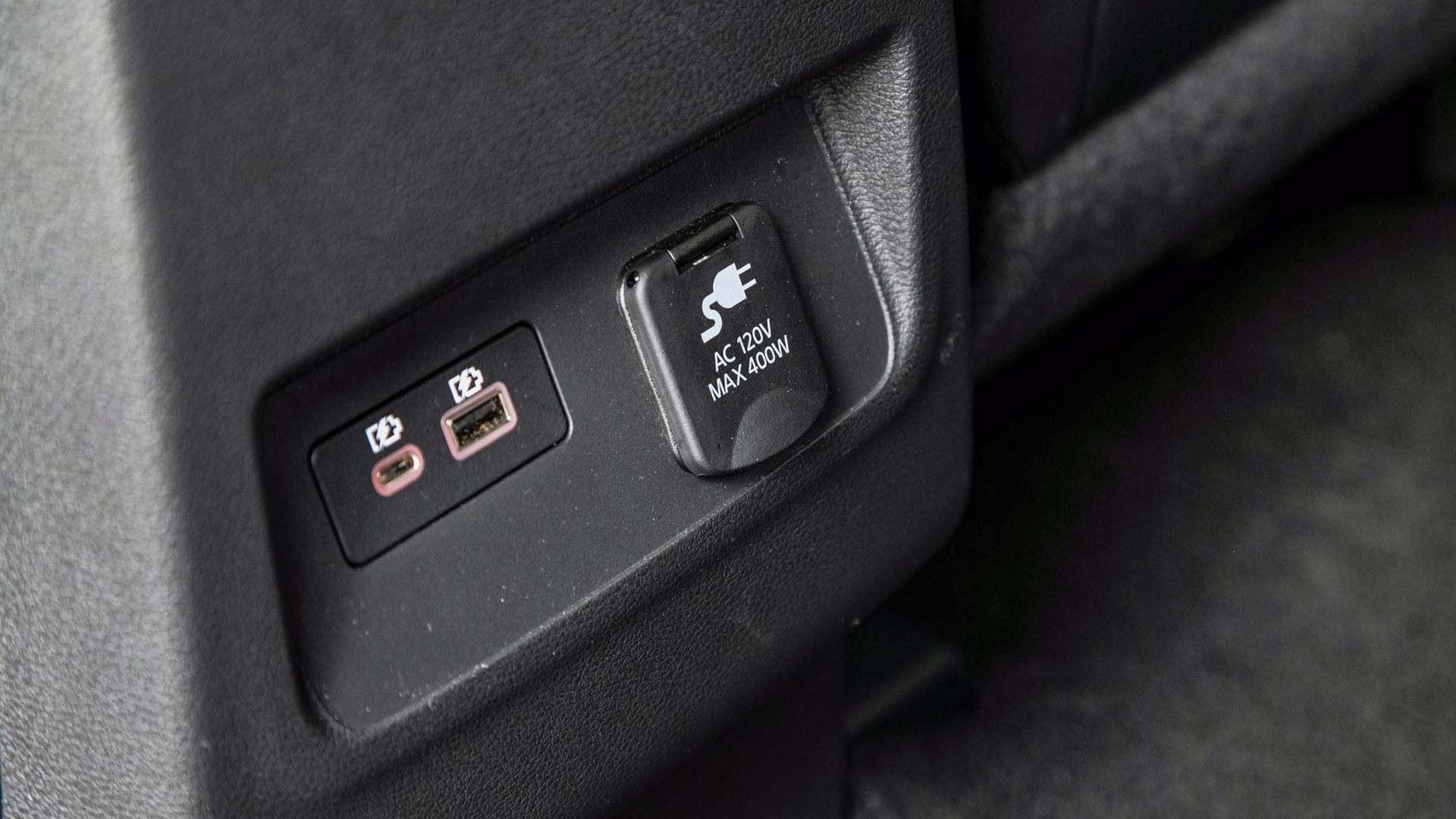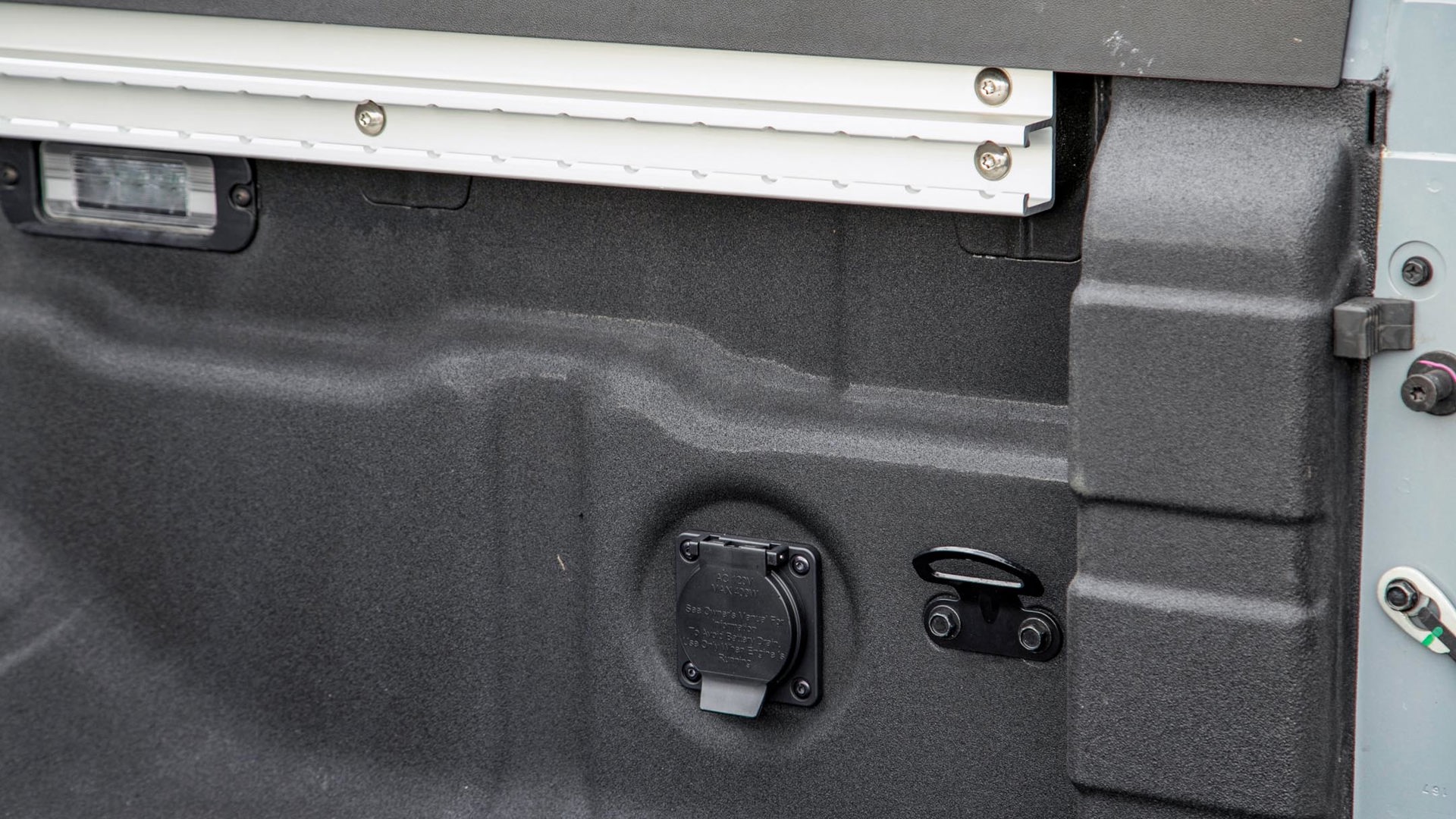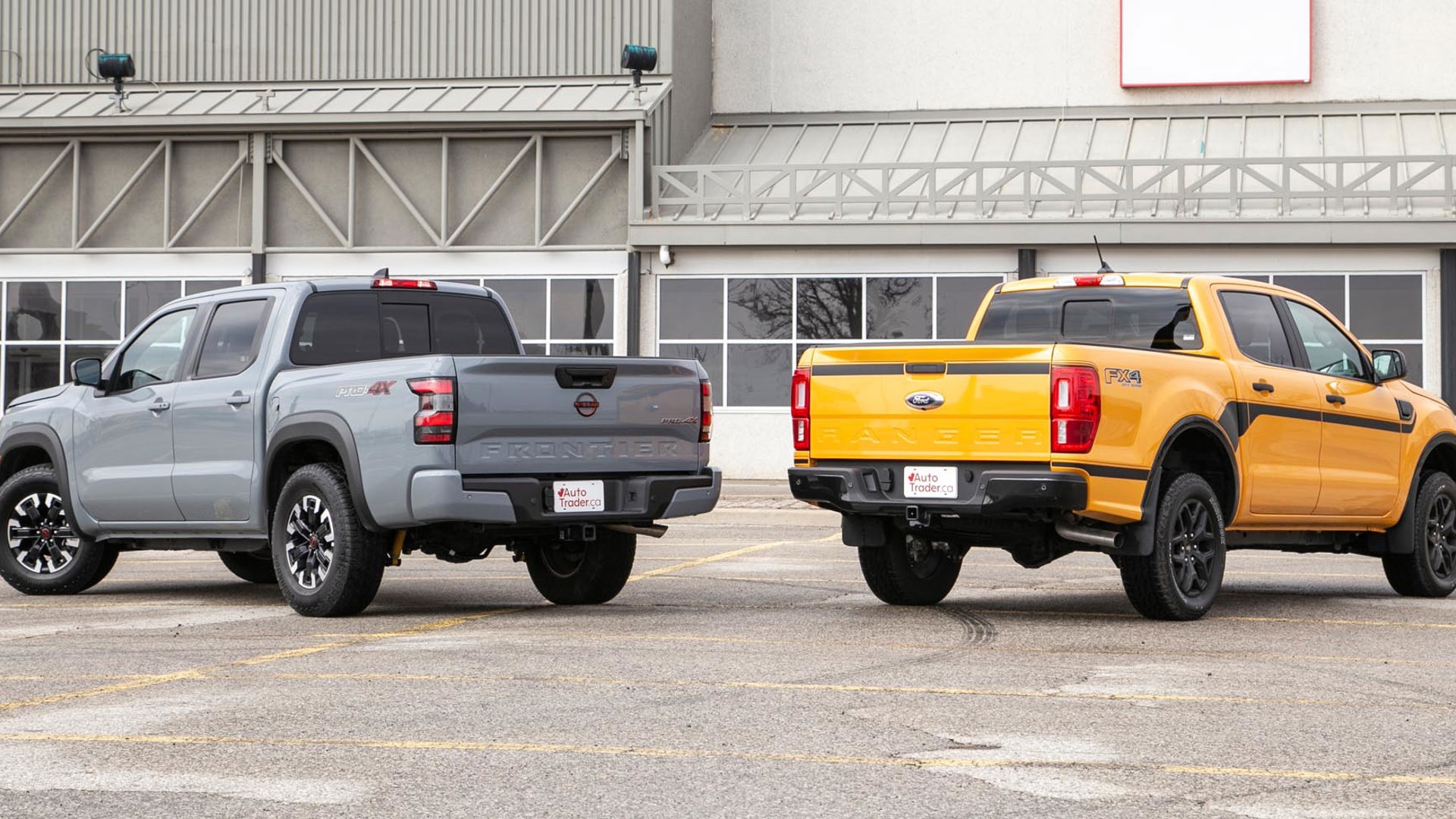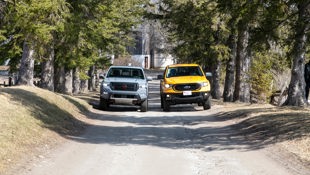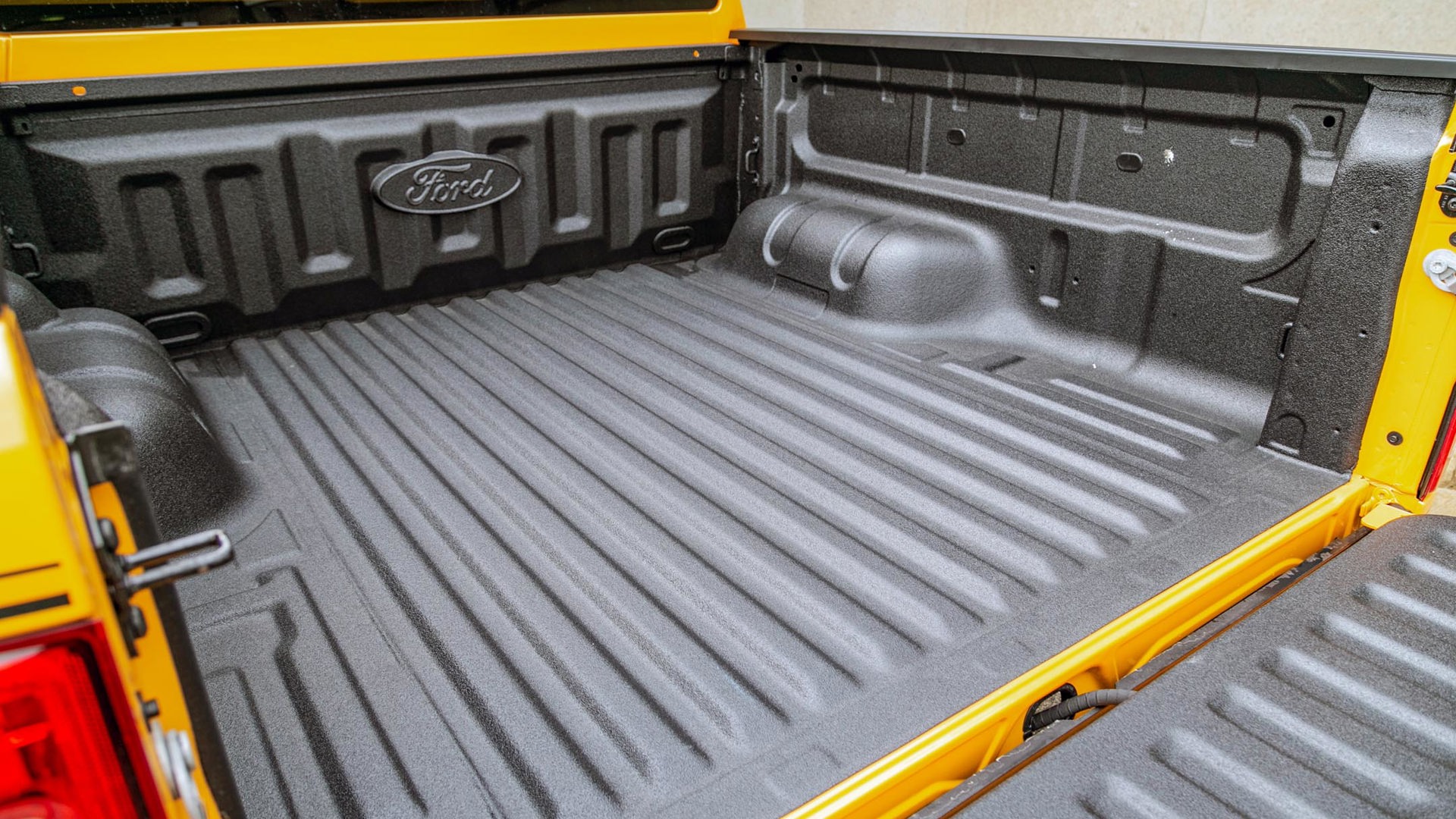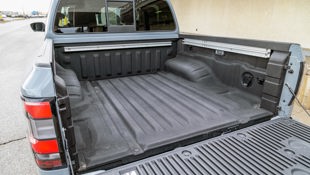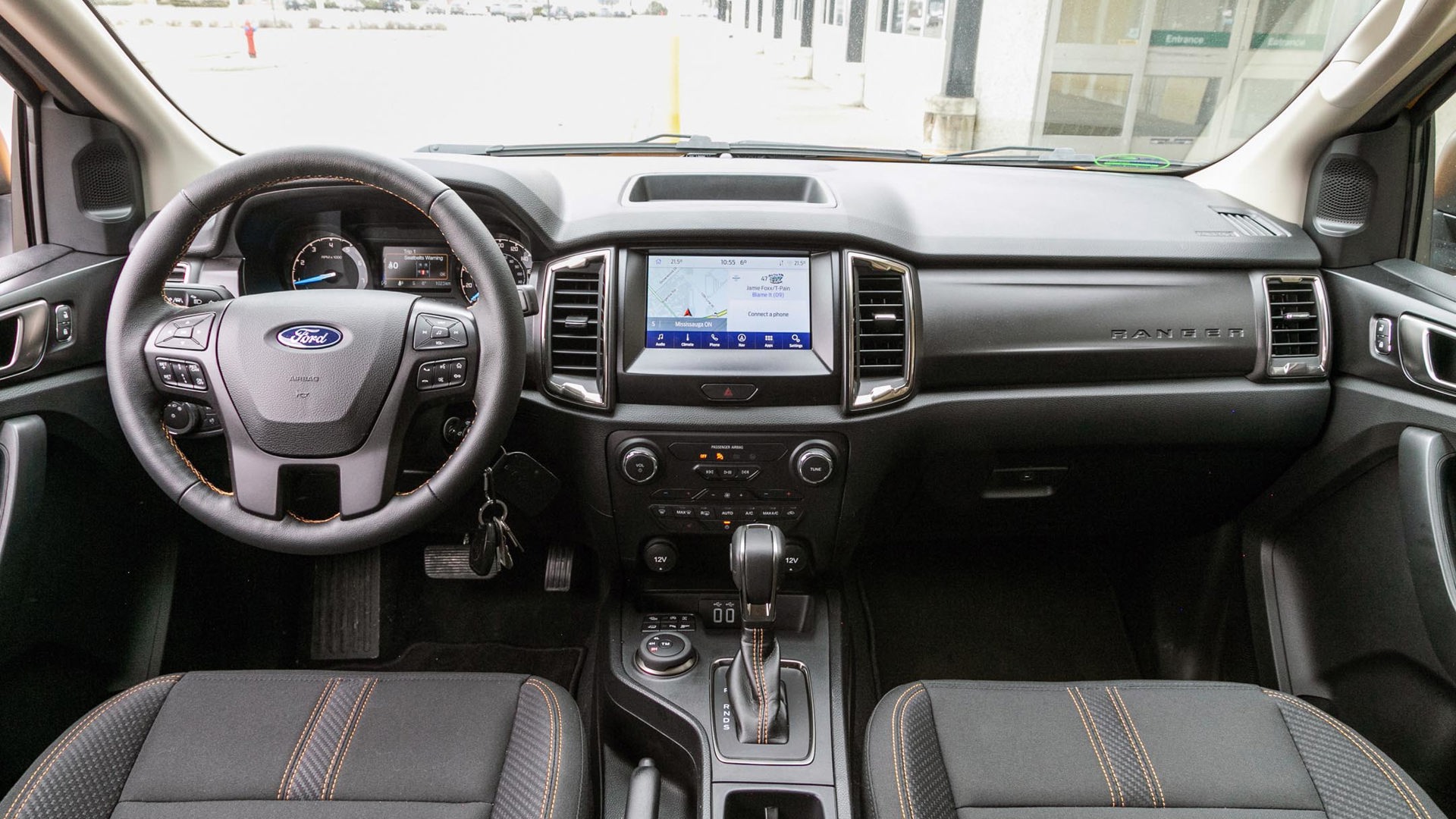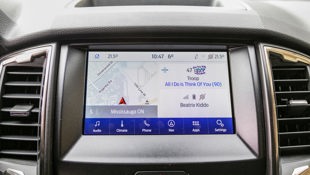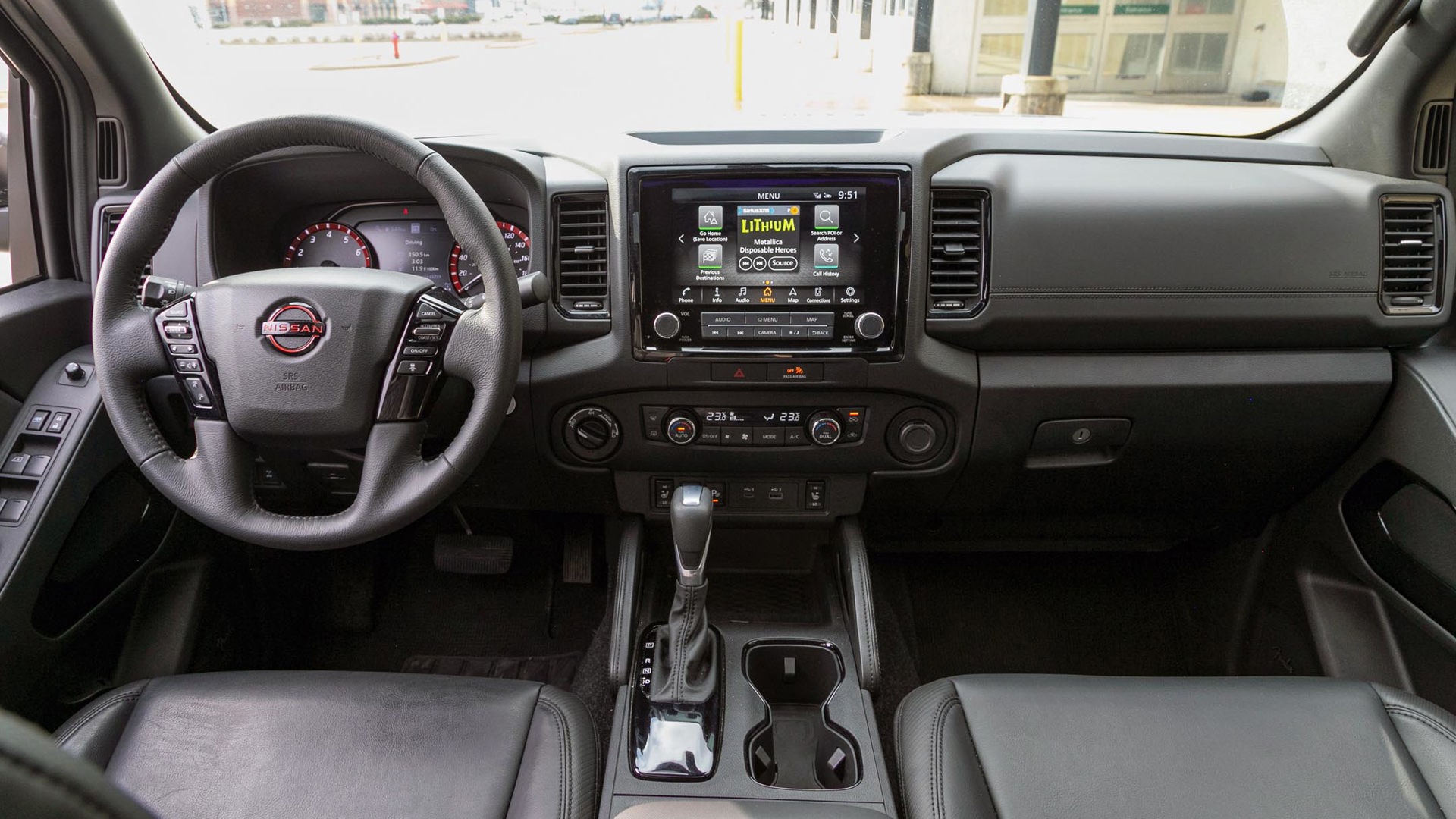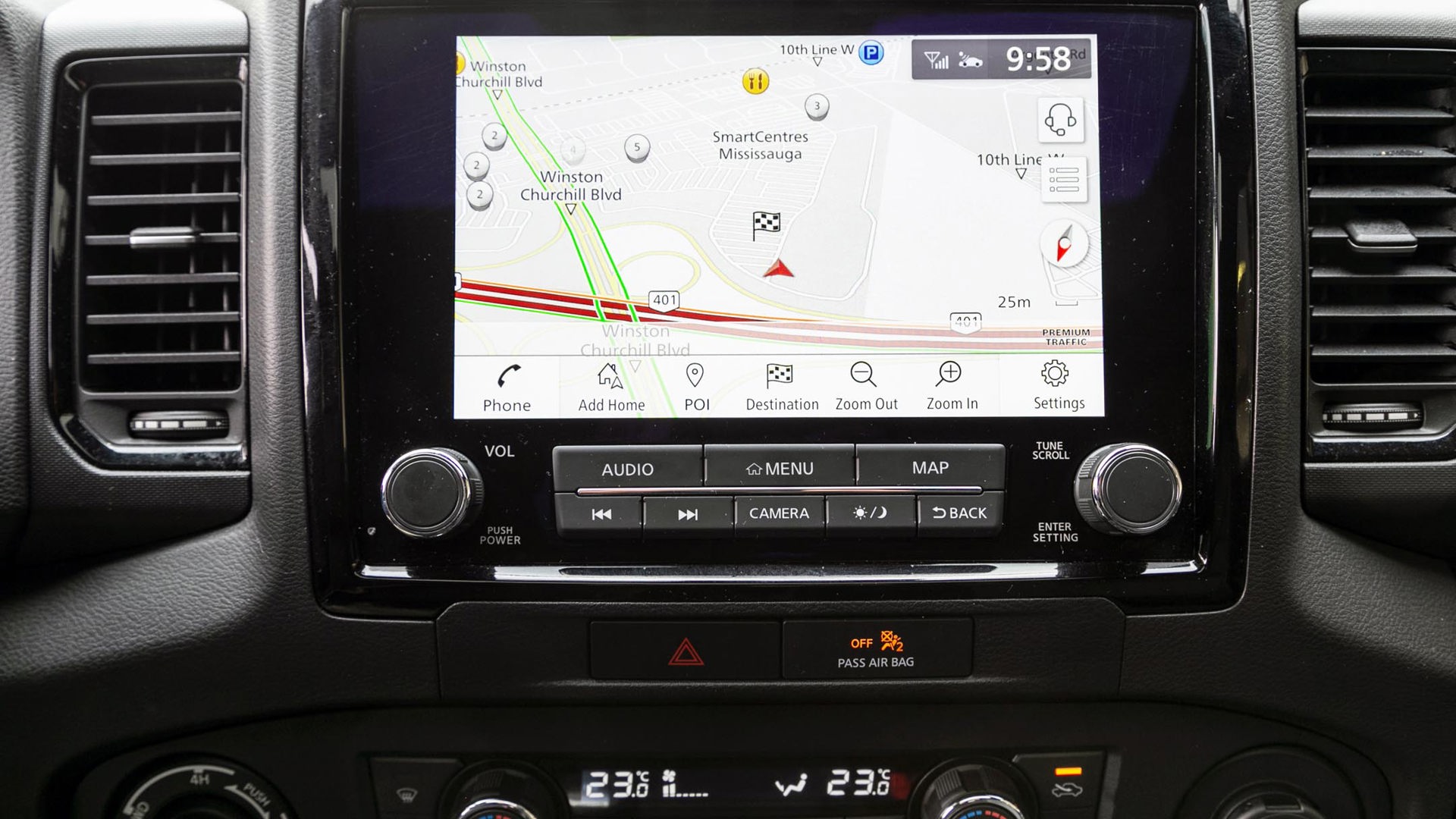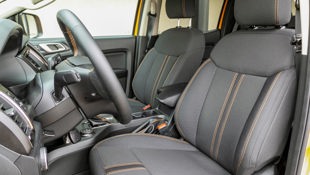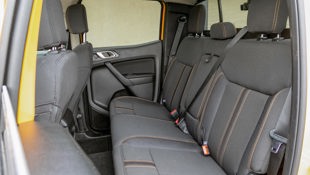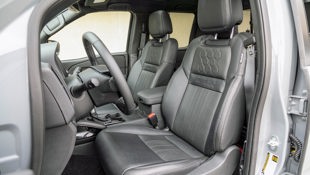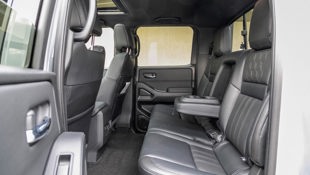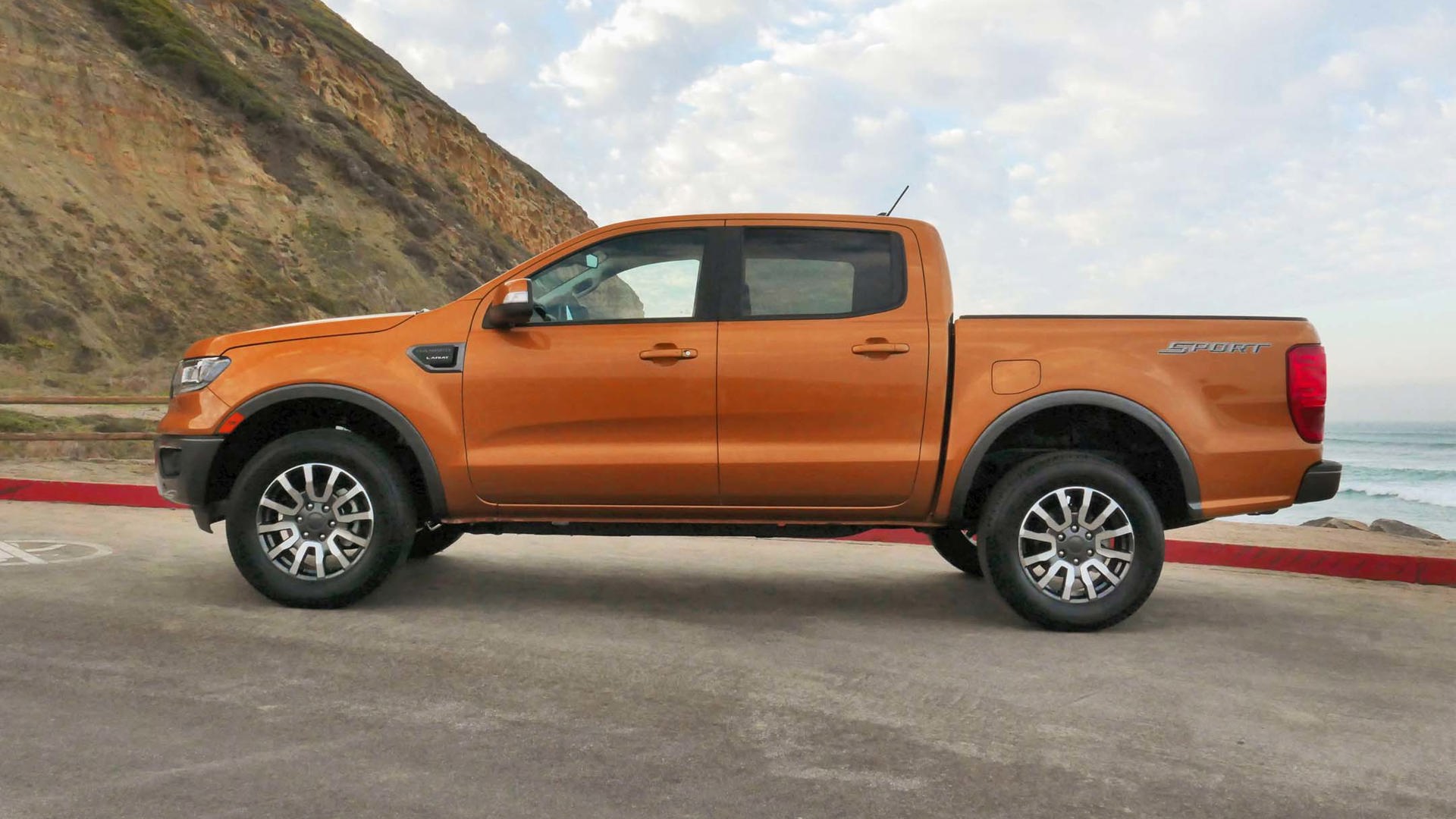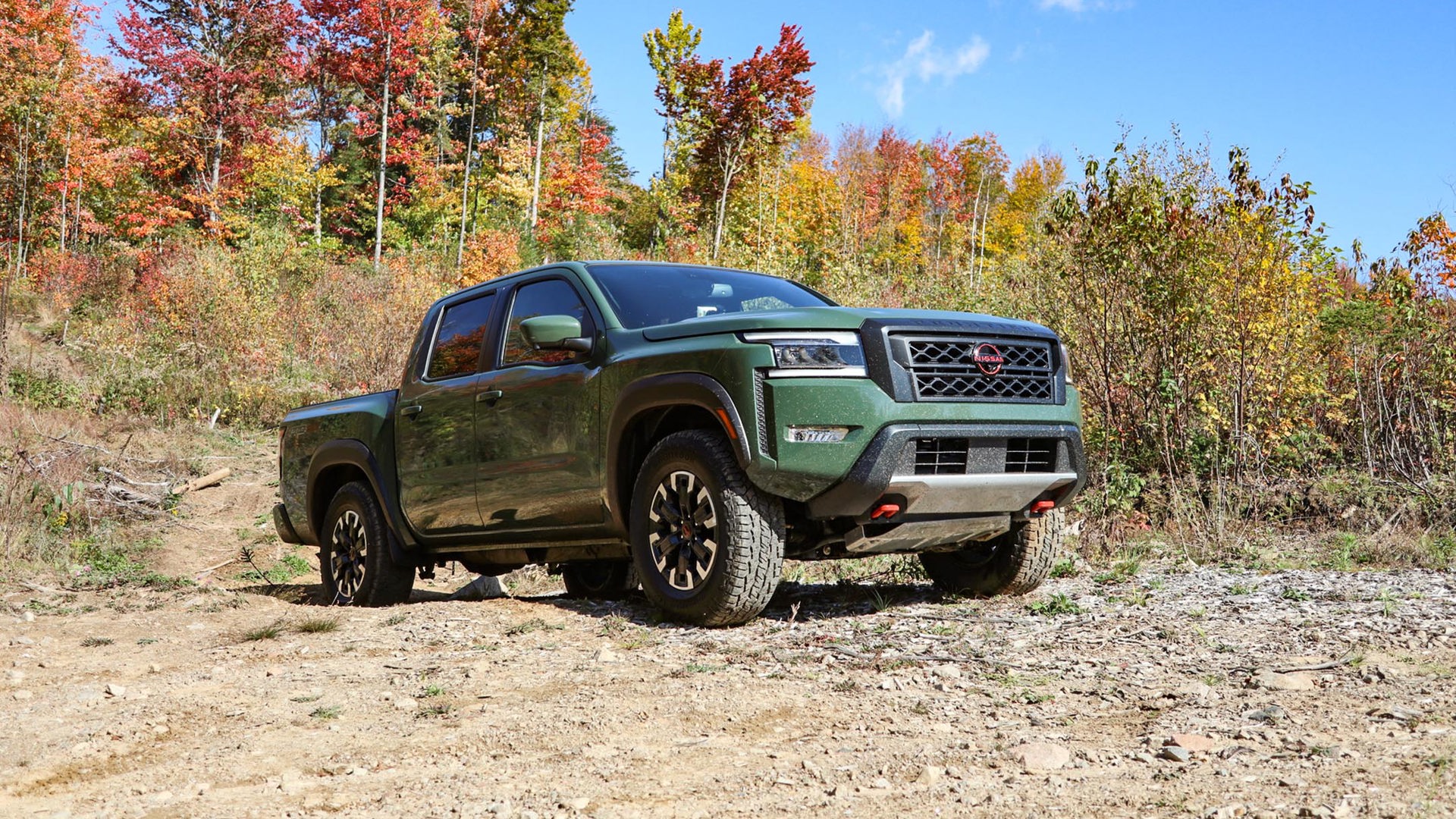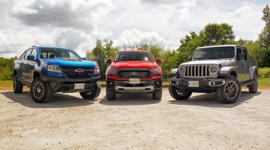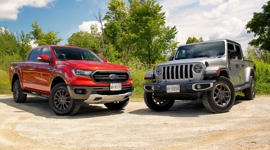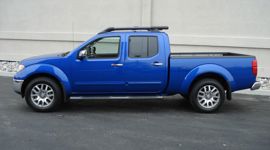Comparison Data
|
2022 Ford Ranger Supercrew 4X4 XLT
|
2022 Nissan Frontier Crew Cab Pro-4X 4X4
|
|---|---|
|
Engine Displacement
2.3L
|
3.8L
|
|
Engine Cylinders
Turbo I4
|
V6
|
|
Peak Horsepower
270 hp @ 5,500 rpm
|
310 hp @ 6,400 rpm
|
|
Peak Torque
310 lb-ft @ 3,000 rpm
|
281 lb-ft @ 4,400 rpm
|
|
Fuel Economy
11.9 / 9.7 / 10.9 L/100 km cty/hwy/cmb
|
13.7 / 10.6 / 12.3 L/100 km cty/hwy/cmb
|
|
Cargo Space
n/a
|
n/a
|
|
Base Price
$39,240
|
$47,998
|
|
A/C Tax
$100
|
$100
|
|
Destination Fee
$1,995
|
$1,950
|
|
Price as Tested
$50,845
|
$52,348
|
|
Optional Equipment
$9,510 – 302A Equipment Group, $3,385; Splash Package, $1,700; FX4 Off-Road Package, $1,400; Technology Package, $1,000; Trailer Tow Package, $600; Spray-in Bedliner, $600; Cyber Orange Paint, $550; Splash Guards, $150; Securicode Keypad, $125
|
$2,300 – Pro-4X Luxury Package, $2,000; Boulder Grey Pearl Paint, $300
|
There’s been a lot of hype lately about the new trucks on the block.
The Hyundai Santa Cruz and Ford Maverick have garnered plenty of hype since the earliest rumours they were on the way, with their unibody construction and playful demeanours hogging the spotlight. But there’s still a lot to like about other entries on the market, including midsize models from the likes of Ford and Nissan.
While the 2022 Ford Ranger is a little long in the tooth after only a handful of years on the North American market – fear not; there’s a new one on the way – it’s still a solid entry in a segment dominated by the seemingly unkillable Toyota Tacoma. Then there’s the 2022 Nissan Frontier that’s technically new but isn’t exactly state-of-the-art. These are two very different takes on the midsize truck, and which one reigns supreme in this battle of midsize might is something of a surprise.
Power
There’s a bit of bravado that comes with truck ownership, and part of that stems from the amount of power they throw down. While neither of these trucks are going to threaten a one-ton dually in a tug-of-war, they still need enough gusto to haul a heavy payload or tow a trailer, and both are competitive within the category.
With its 3.8L V6, the 2022 Frontier became the most powerful midsize pickup on the market; at 310 hp, it bests the 270 hp made by the Ranger’s turbocharged 2.3L four-cylinder engine. But it’s torque that does the real work, and the boosted Ford doles out 310 lb-ft versus the Nissan’s 281. What’s more, the Nissan needs to rev up to 4,400 rpm to reach that peak output, and weighs an additional 125 kg (276 lb) or so, making it feel sluggish around town compared to the Ranger. It does, however, pull fine once the revs are up.
Ford utilizes a 10-speed automatic transmission in the Ranger that’s a bit clunky at times, and is programmed to be in as tall a gear as possible in the interest of fuel efficiency. The trouble is it’s often too tall, causing the engine to lug along at fewer than 1,500 rpm – not exactly the sweet spot for passing or merging. The Nissan, on the other hand, has a wonderfully smooth nine-speed automatic that can be occasionally reluctant to downshift as quickly as a driver might like, but otherwise feels like a well-sorted transmission that’s suited well to this truck.
Ford Ranger: 7.5/10; Nissan Frontier: 7.5/10
Fuel Economy
Unsurprisingly, the Ford’s smaller engine, lighter weight, and extra gear in its transmission all add up to superior fuel efficiency. Rated at 11.9 L/100 km in the city, 9.7 on the highway, and 10.9 combined, the Ranger bests the Frontier by at least 1.0 L/100 km in each measure. Our test loop that featured a mix of urban, rural, and highway driving reinforced the official figures, with the Nissan averaging 12.3 L/100 km compared to the Ford’s 11.0.
Within the class, the Ford’s consumption is only mid-pack, with General Motors (GM) and Toyota offerings delivering better efficiency, while the Nissan rates among the least efficient. However, during a long highway stint, the Nissan easily managed consumption in the low 10s – even with half the trip covered with a sizable load in its bed.
Ford Ranger: 7/10; Nissan Frontier: 6/10
Practicality
With a box length of 1,496 mm (58.9 in), the Frontier’s is not only shorter than the Ranger’s at 1,524 mm (60 in), but it’s also shorter than that of the Toyota Tacoma, Chevrolet Colorado, and even the unibody Honda Ridgeline. The Ranger’s box is also deeper than the Nissan’s, which is a mixed blessing since it’s tough to reach over the taller side walls.
Still, it’s rare that those 28 mm (1.1 in) of length will make much of a difference in everyday use, and when called upon to carry an entire phone booth, the Nissan managed just fine with its tailgate down, just as every one of its midsize rivals would be capable of, too. Both trucks can also be had with longer beds, but only in their cab-and-a-half configurations.
Both trucks tested here sported durable spray-in bedliners (standard on the Nissan, optional on the Ford), and had four tie-down rings each, although the Nissan’s front two are mounted quite high on the side walls compared to the Ford’s that are on the floor. Nissan includes a system with four additional cleats that can be positioned anywhere along a bedside track system, too.
This particular Frontier also had a 120-volt power outlet in the bed, as well a bright LED cargo light, plus a damped tailgate – none of which were fitted to the Ranger tested here. Inside, the both sets of rear seats can have their bases folded up and their backs down, but while the Nissan’s has a 60/40 split, the Ford’s doesn’t.
Ford lists this Ranger’s maximum payload at 730 kg (1,609 lb), which is notably better than the Frontier Pro-4X’s listed capacity of 558 kg (1,230 lb). Similarly, when properly equipped, the Ranger is rated to tow up to 3,401 kg (7,498 lb) versus the Frontier’s 2,840 kg (6,260 lb). Both trucks were fitted with trailer tow packages, although the Ford’s was a $600 option compared to standard kit for this Nissan.
Ford Ranger: 8/10; Nissan Frontier: 7/10
Features
Beyond the practical features that come with the range-topping Frontier Pro-4X trim, the cabin is also loaded up with amenities, too. Keyless entry, remote engine start, a sunroof, heated steering wheel, power driver’s seat, wireless smartphone charging, and onboard navigation are all included. Beyond those, this Frontier also had leather seats and a great-sounding 10-speaker sound system that are part of an optional Luxury pack ($2,000).
With this Ranger XLT fitted with the optional FX4 package ($1,400), it wore skid plates, an off-road tuned suspension, and locking rear differential, just like the Pro-4X. However, the pricier Tremor package ($5,250) takes it a step further – and, in fairness, makes it more of a Pro-4X competitor – thanks to all-terrain tires and upgraded Fox shocks, among other upgrades.
Ford Ranger: 7/10; Nissan Frontier: 9/10
User Friendliness
These trucks have a right-size feel when driving around town. They’re small enough to be able to fit in underground parking garages (although AutoTrader Editor-in-Chief Jodi Lai commented that the Ford’s antenna only barely fit in her garage’s height restriction). Visibility from the both driver’s seats is good, although the Nissan’s B-pillars are thick, creating blind-spots that are exacerbated by the large grab handles.
The Ranger’s interior design dates back several years now, but the controls are sensibly laid out and haven’t fallen prey to the current automotive trends of all-glass cockpits and fiddly haptic controls. Ford still uses big knobs for volume and tuning the audio system, the steering wheel has plenty of controls, and the gauges feature a pair of traditional, easy-to-read dials.
Despite the Frontier being redesigned for 2022, its control layout is decidedly old-school, too. Key features all have physical buttons and the gauges are easy to see. The Frontier’s nine-inch infotainment touchscreen is notably bigger than the Ranger’s, but both offer intuitive menu navigation, plus both Android Auto and Apple CarPlay connectivity.
Beyond its extra amenities, the Nissan manages to feel more upscale and better-built than the Ford with its chintzy interior finishes and doors and tailgate that sound like recycled pop cans when shut.
Ford Ranger: 8/10; Nissan Frontier: 9/10
Comfort
Being proper body-on-frame trucks, ride quality expectations need to be managed, and indeed, neither of these will be mistaken for a luxury sedan. But the Ranger’s FX4 suspension is surprisingly stiff, causing a particularly bouncy ride for occupants. The Nissan, on the other hand, still feels like a truck, but a much more refined one, controlling the amount of bumpiness that reaches occupants off-road. It’s still stiff, but it feels a little more planted than the Ranger.
The bigger difference between the two comes from the seats themselves. While both heated, Nissan employs its so-called zero-gravity design. The ability to minimize driver fatigue during long drives is nothing short of remarkable, as this author found after spending nearly 12 hours in the Frontier one day. Conversely, it was much harder to find a comfortable driving position in the Ranger.
Ford Ranger: 6/10; Nissan Frontier: 8.5/10
Driving Feel
The stiff FX4 suspension in the Ranger seems to be more of a hindrance than a help off-road. We found the Ford bounced around wildly, making us feel like dashboard bobbleheads. The heavier Frontier is much better planted off-road, as its Bilstein shocks help to absorb the bumps rather than transmit them to the cabin.
On-road, impressions changed somewhat. While the Ranger still bounces over potholes and bumps, its stiffer suspension and quicker steering make it more car-like when zipping around urban settings. The Frontier is decidedly truck-like, with its slower steering also requiring a surprising amount of muscle to wheel it around, especially at parking lot speeds. While I got used to it over the week, Jodi disliked it enough that the steering alone would have her choose the Ford over the Nissan to live with; and either way, we both agreed that the Frontier drives like it’s already 10 years old in many ways.
Ford Ranger: 7/10; Nissan Frontier: 7/10
Safety
Both manufacturers should be commended for offering decent safety suites with their trucks. Front and side airbags are standard, of course, as are knee airbags in the Nissan. Both trucks come with blind-spot monitoring systems and pre-collision sensing with automated braking, while the Ranger adds lane-keeping assistance – a feature not offered by Nissan here.
Nissan goes on to include automated high-beam control of its excellent LED headlights (this Ranger still used halogen units), a driver alertness warning system, adaptive cruise control, and parking sensors, too. The Ranger, meanwhile, also featured automatic high-beam headlights, and was fitted with adaptive cruise that came at an additional $1,000 cost.
Ford Ranger: 7/10; Nissan Frontier: 7.5/10
Styling
Age and familiarity have dulled the lustre of the Ranger’s look, but with a new Splash graphics package covering our school bus-yellow tester with contrasting black vinyl certainly stood out on the road. The new Frontier looks more macho with its squared-off front end and bigger and bolder grille. Plus, the stacked LED daylight running lights, blacked out trim, and beefy-looking all-terrain tires help make the Pro-4X one of the best-looking midsize trucks available today.
Inside, the designs of both trucks are traditional layouts, with rectangular shapes and lots of nooks, crannies, and cubbies for holding all manner of tools and bobbles one might bring with them.
Ford Ranger: 7/10; Nissan Frontier: 9/10
Value
Our Ranger XLT tester in its crew cab configuration started at a reasonable $39,240 – plus a non-negotiable $1,995 freight charge – but was fitted with nearly $10,000 in options, bringing the tally to $50,845 before tax. In an age where half-ton pickups regularly reach towards six figures, the Ranger still seems like a decent value – until the Frontier Pro-4X is taken into account.
Starting at $47,998, plus $1,950 freight charge, the to-trim Nissan comes so well equipped that skipping the $2,000 Luxury package would be perfectly reasonable if it weren’t for missing out on the upgraded stereo. Even so, with the optional package added, the Frontier is only $1,400 more than the Ranger, but feels like it should cost several thousand dollars more.
Ford Ranger: 7/10; Nissan Frontier: 8/10
The Verdict
There are some great offerings in the midsize pickup segment, with a truck and spec sure to meet a broad spectrum of buyer needs. These two make a compelling case for themselves, and when looking at the Ranger’s greater torque, fuel efficiency, and towing and payload capacities, it still deserves consideration despite being on in years. The Ford can also be specified from very bare bones to quite costly variants, but in this test it represents a poorer value.
Despite the abject merits of the Ranger, the 2022 Nissan Frontier Pro-4X’s exceptional value, impressive equipment, and superior off-road manners – all for only a little more than this mid-grade Ranger – make it a worthy choice.
